ART AS A SIDE EFFECTS OF FLYING
25 years with my head in the clouds, or how to take a paraglider from a small mountain in Kashubia straight to a photo exhibition in New York. (text on the request from Press magazine, with a special focus on young photographers in search of their creative path)
It all began exactly 25 years ago. My friend Kamil Antkowiak took me to a small Kashubian mountain. It was the beginning of summer, and Kamil had just finished a paragliding course on Żar – he had his own paraglider, and all the equipment you needed to fly. I remember the moment we took off like it was yesterday. Kamil gave me the instructions. I put on the harness and the helmet. The paraglider was resting on the ground behind us. When I felt the wind on my face, I started running. I gained speed until finally a gust of air lifted me up and over the trees. A great big space opened before my eyes. The perspective changed. I was free as a bird. I felt euphoria, and immediately knew that I never wanted this flight to end. It only lasted a couple of seconds, then my feet were back on the ground. I still remember that promise of flying over the horizon, the experience of space, of nature. It was absolutely amazing. So beware, dear reader – before you try your hand at flying, be sure that you can face the consequences, because even such an innocent first time could change your life forever.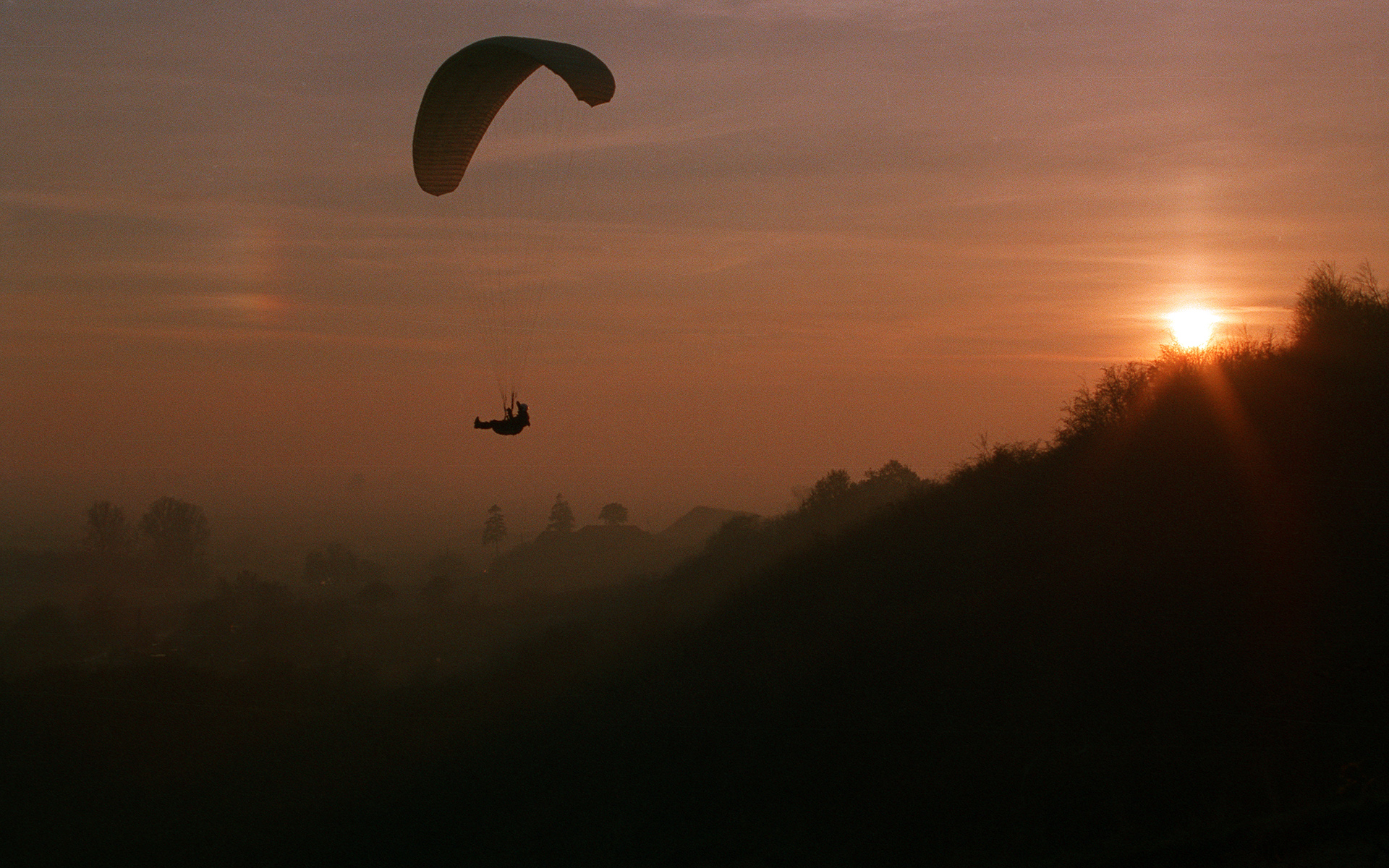
flight from a small kashubian hill in Poland, around 1996
TRYING MY HAND AT ARCHITECTURE
This was the case with me, because initially I was supposed to be an architect. My first flight happened around the same time I got into the Gdansk University of Technology to study architecture. I mean, what else could I do? Both my parents and my brother are architects. The space, the images, and the language have been present in my home for as long as I can remember, and once I went to university, my father opened my eyes to all of the things I was learning. This is how my fascination with the work of Władysław Strzemiński and his “Theory of Vision” (a must-read for every visually-minded person), as well as with Katarzyna Kobro and her space-time rhythms began. After university, I even tried being an architect and worked in my dad’s studio for a couple of years.
I had not expected architecture to be so demanding. It wasn’t even that you had to combine creativity with grueling work, know construction law, be able to work in teams, know how to negotiate your salary and how to yield to clients, to whom architects are essentially subservient (they are, after all, spending other people’s money). Neither was it the awareness that the result was permanent, that you couldn’t put a failed building away in a closet like a botched sculpture. I didn’t even mind that the process was very long, that it took years for the initial concept to become reality. The main problem was that architecture has to be the architect’s main passion. Most creative professions are like that – your imagination is always working in the background. Even at night, after you’ve come home, when it’s quiet and you can sit down to do some work, you’re not so much creating as you are retrieving the day’s labors from the recesses of your mind.
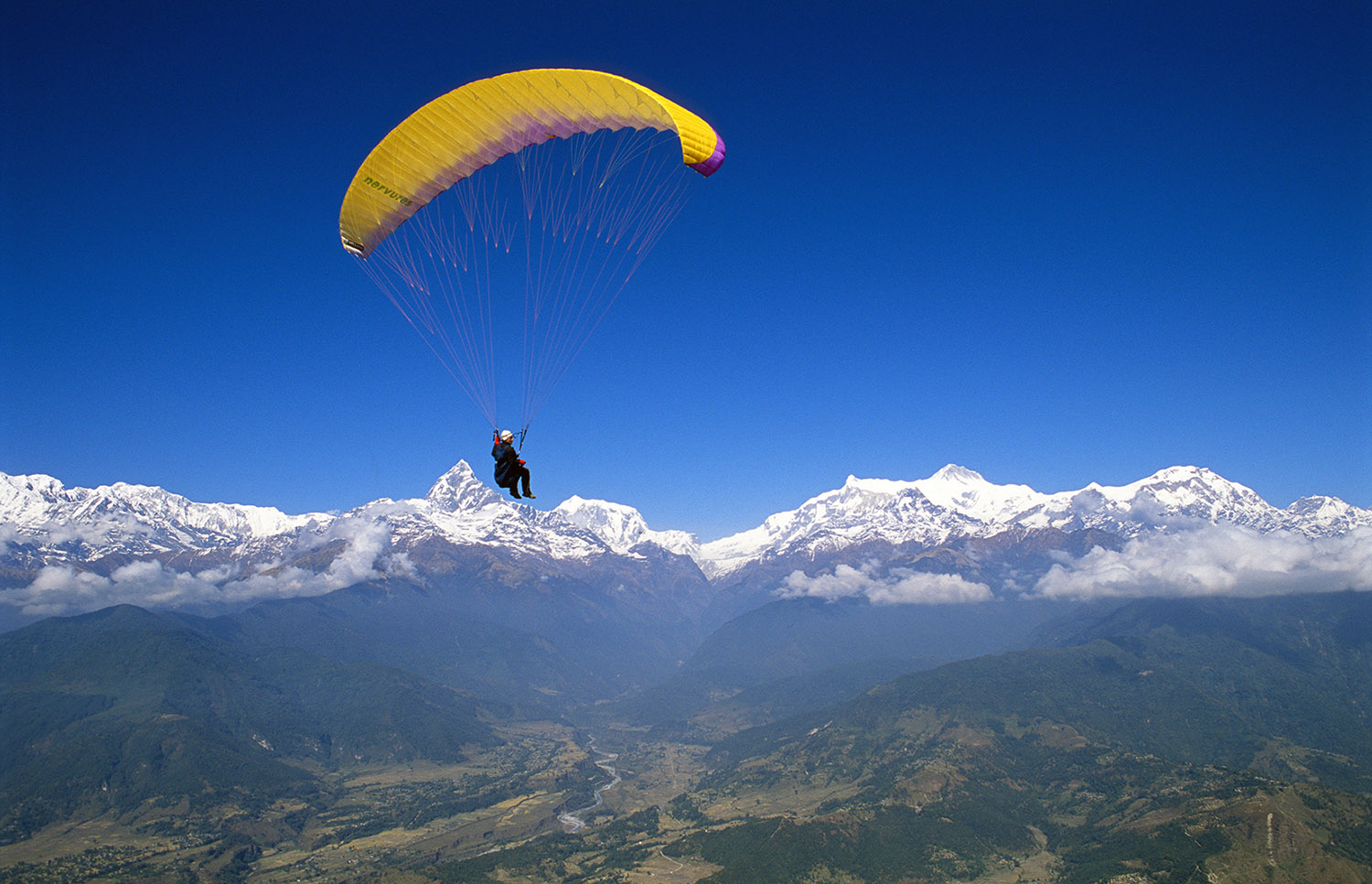
flight in the direction of Annapurna massif, Nepal, 2005
But when I would sit down in the evening and reach into my imagination, I would only come up with images from my last flight, or the weather forecast for the next day. Everything else would be pushed aside by the sensation of flying close to a cliff, of peeking into a chimney, of brushing against clouds. I knew that if I went on like this, I’d end up being a lousy and unhappy architect. So I started looking for ways to merge my professional life with my passion for flying. I tried teaching others to fly, I was a guide for flying aficionados on trips to the Himalaya or to Vietnam – but I didn’t feel comfortable in that role. Finally, I tried photography, seeing as I already knew how to do it.
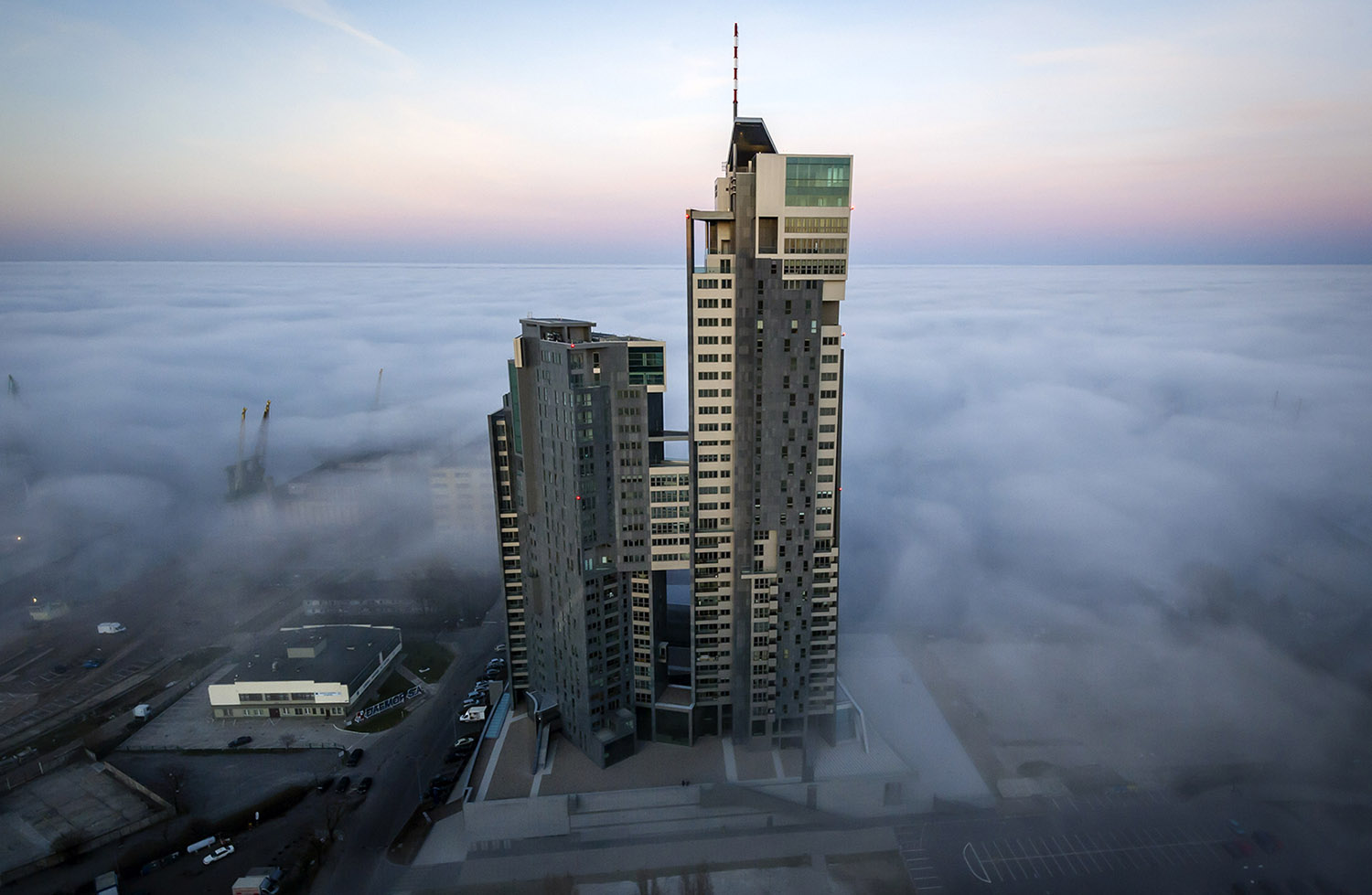
Gdynia, Before the Drone Age, photo for promotion the real estate development,
That was around 2002. Tricity was rapidly expanding, with developers vying for the attention of potential clients. As an architect, I knew perfectly well how to showcase a piece of real estate. So I took some pictures for my architect friends. It was mostly empty plots which someone else would then fill up with visualizations. Luckily, Tricity is incredibly picturesque, and you can really capture its crisp layout from a bird’s eye view. On one side you have the sea, on the other – moraine hills covered in old beech trees. And between them lies the city. Within minutes you can get to the sea or the woods from any point in Gdynia. The city’s selling points are all on display.
Using the paraglider, I was able to fully showcase the beautiful scenery while taking pictures. And I was the only one. Planes fly at higher altitudes, so when using them you only get the “bigger picture”. I liked flying right up to my subject. My portfolio was growing, it wasn’t hard to get more clients to start using my services. Then the construction of the A1 highway began, followed by new railway lines, resorts – which meant even more commissions from developers.
I spent the first four years after graduating from the university trying to work in my field – half-time for the last six months. I mean, how do you just flush five years of school and a prestigious profession down the drain to strap a lawnmower engine to your back and start taking pictures? My dad, with whom I worked, could clearly see where my head was. He’d say to me: “Follow your heart. Just listen to your inner voice, and you’ll know what to do.” Soon I noticed that while I was halfway productive on windy and rainy days, if the sun was out, my co-workers would go “Just go fly your thing, Kacper, you’re putting everyone on edge.” I realized that my passion for flying had turned into a full-fledged addiction.
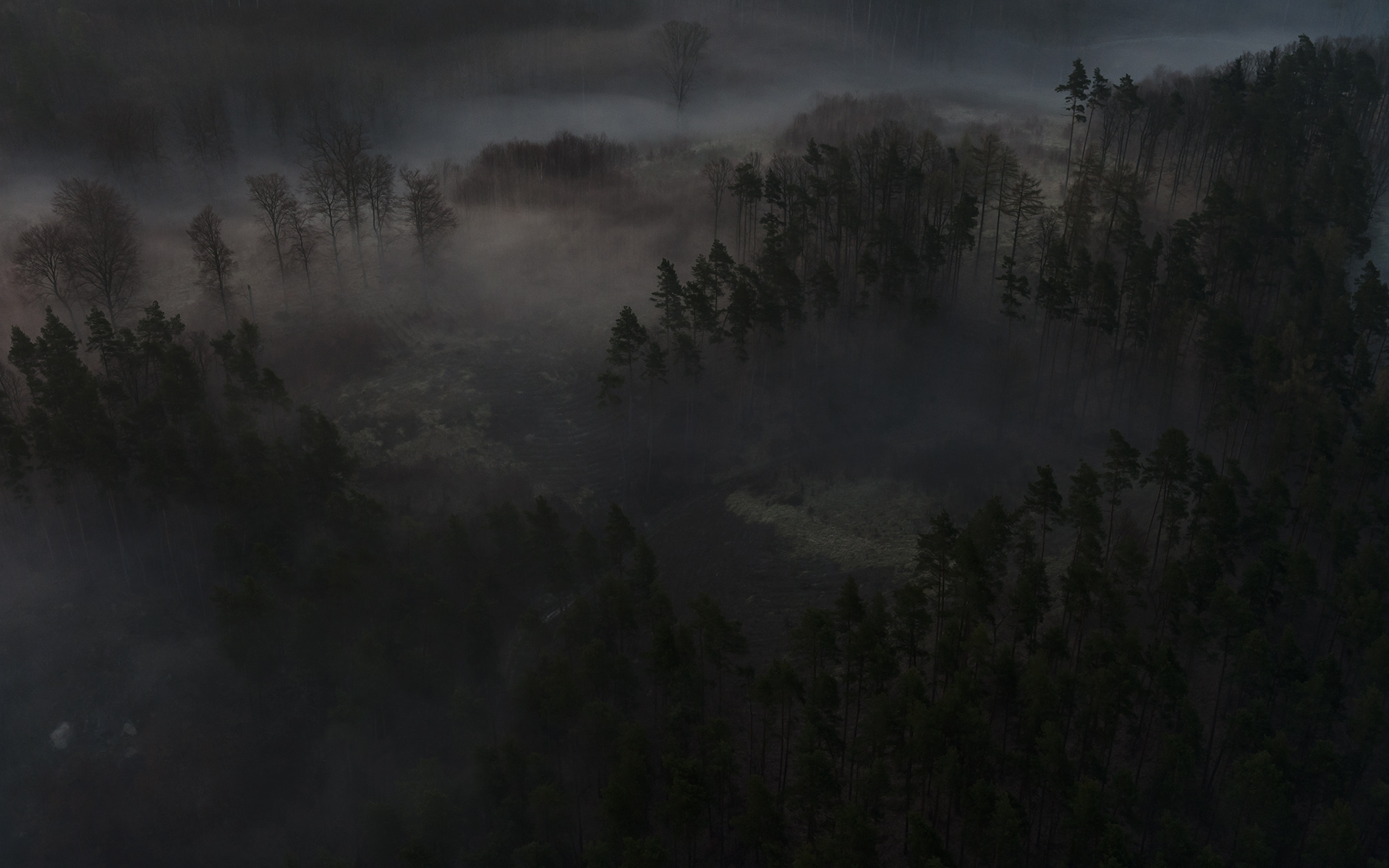
Before the Age of Drones, with a motor on my back and a paraglider over my head, I reached the strangest places driven by curiosity about the world
I WAS LOOKING FOR MYSELF IN THE SKY
I left dad’s studio and took to the sky to take pictures. I had clients and commissions. Through my work, I got to see the strangest places – places I’d never find on my own. If I already shot everything I needed, but still had gas in the tank, I’d keep flying around and taking pictures for myself. I’d venture out all over Poland. My drawer was filling up with good landscape shots.
I figured I could share my pictures with the press and thus raise my profile. First, together with Marcin Ręczmin from “Gazeta Wyborcza Trójmiasto”, we organized a competition called “Tricity From Above”. Once a week, we’d publish a picture of a characteristic landmark photographed in a non-obvious way. It was incredibly stimulating. It turned out that my photos resonated with the readers, and that they were eagerly anticipating each new installment. I started working with the late Maciek Kosycarz from KFP – a local photo agency – who cheered me on and set me on the right track. Several years later, I began working the Forum agency. In both cases it was clear that the newspapers wouldn’t commission me directly, because they didn’t have the budget, but they were interested in photos to go with articles on industry, tourism, environmental protection, etc.
So I kept flying and wondering what else I could do, how I could see something new still. One time, I pointed the camera straight down. I saw a map below me. So I took the picture. It turned out that the image had everything: mankind’s footprint, the beauty of nature, the devastation, but also unexpected hidden secrets, and a sense of potential - an entire treasure trove of information I wasn’t able to decipher. A farmer looking at it would see something else than an archeologist. I was fascinated with the form, and the breadth of information contained in the image alone. That’s how I got the idea to use pictures as a kind of record of human activity, one that would allow a potential alien a glimpse into what humankind is about. I started searching for traces of human presence in the landscape, digging into the city’s nooks and crannies, trying to find out the cost of generating electricity, or whether the forest I’ve known all my life was a natural one or something no different from a potato field (except for being there longer).

Is the forest I am looking at an ancient virgin forest or an industrial timber crop? From Side Effects projct, Autumn series, composition 01, Poland 2010
That was the beginning of my “Side Effects” project. I started sending the pictures out to press photo competitions. But they were all taken with the intention of being shared. They showed the world, but were not commissioned by it; they were published in newspapers, but throughout my entire career, I got literally just one request for a specific picture. The others were all byproducts. “Oh, and while you’re there, get some shots of the blue-greenalgae, we’ll probably run a story on them in the summer.”
Then the revolution came – digital replaced film. Automatic programs made sure that the pictures were technically okay, and since there’s more light in the air than there is on the ground, photography itself stopped being difficult. Neither was it expensive anymore. Thus it became incredibly popular among my flying friends. Many of them started trying aerial photography. They’d get business cards, set up websites, making up for their lack of experience with competitive prices. The market was flooded with cheap pictures. But the demand was so big that I still didn’t have time to handle all of it anyway, and most customers would come back to me after getting burnt by the competition.
Still, competition mobilizes you. I wanted to stand apart even more. I started thinking about photographic competitions differently, seeing them as athletic events – something you need to train for, and also a venue where I could present a new perspective on the world around us. I clearly had something to offer, seeing as my pictures were being published and used by photo agencies. I needed confirmation that I was doing made sense. But the truth is that competitions are also very useful I business – accolades give potential clients a sense that they’re hiring someone acclaimed. The fact that I’m a press photographer, a photo reporter, a documentarian – they’re all labels given to me by the industry, by others. People love labels. Competitions helped raise my profile, but also gave me insight into my own work. Once a year, I would open my archive – usually around New Year’s, the submission deadline season, when you’re not working much anyway due to the weather. I would look over my portfolio with a critical eye, take stock of my evolution, and get new ideas.
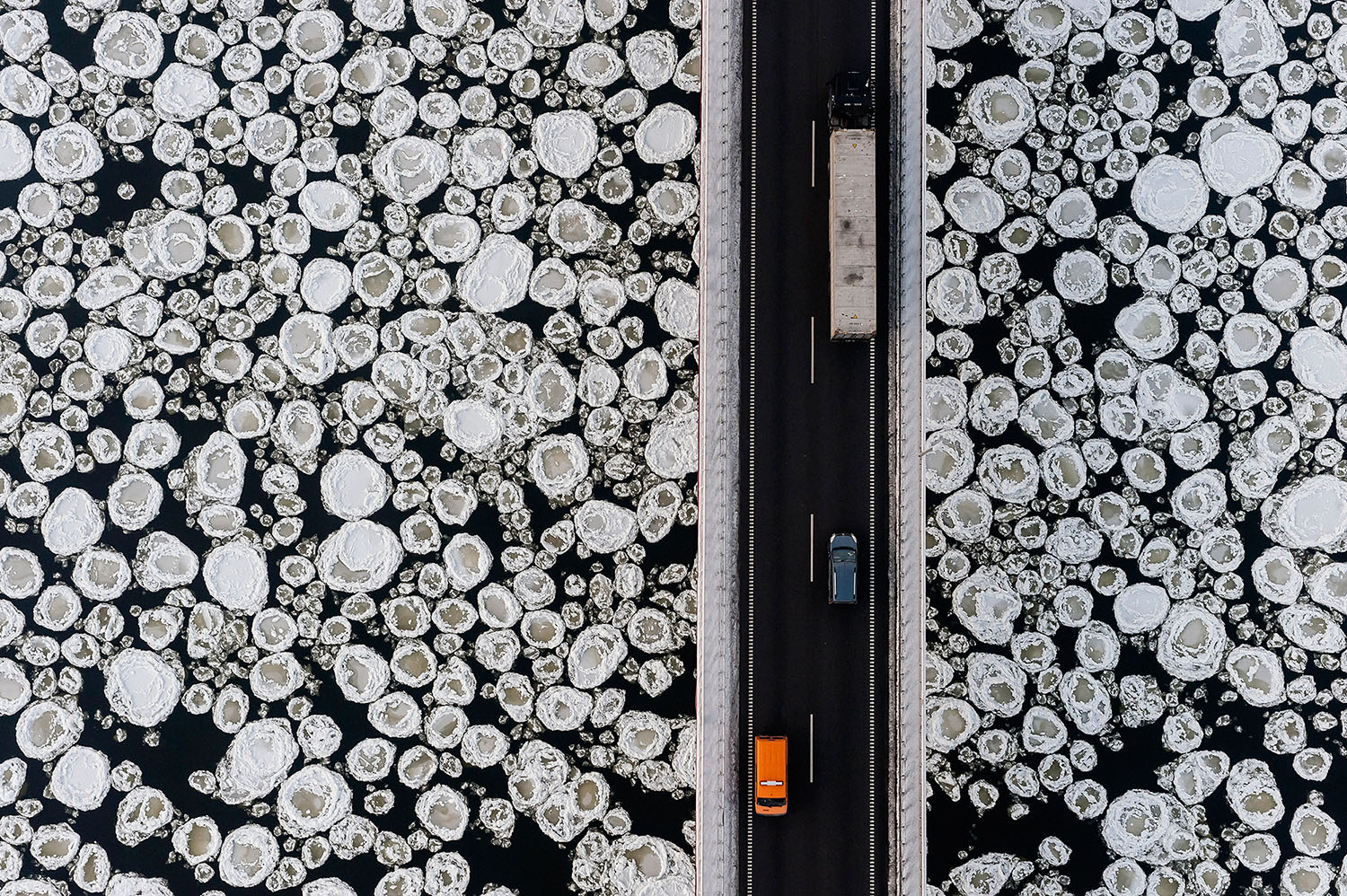
The relationship between nature and man, the last bridge on the Vistula, photo before the Drone Age, Poland 2010
AWARDS OPEN DOORS
The shooting season is usually April - October. I would fly to take pictures for my clients, and while I was at it, I’d also take some for the press and for myself. And then I’d funnel all the money I made into paragliding competitions. Thermal flying, without an engine, has always been the most fun for me. By training for the competitions, I would improve my skills, which I felt translated into better photographs. So I treated them as a business investment. And if they also happened to be wonderful adventures – well, who was I to complain? It all fit together. Experiencing the power of nature, looking for thermals until sunset, the communal experience of flying… Because that’s the thing: when I take pictures, I fly alone. It’s my world, my emotions, my secrets, my craft. Competitions are a different breed. At the end of the day, I was able to share the triumphs and work through the crises with my buddies. This allows you to both soften the blow of defeat and better enjoy the thrill of success. It was also a great way to see the world. Sometimes I’d visit places completely forgotten by civilization. Get picked up by an Indian family that was dead set on at least giving me a ride to the main road, even though they were already lugging two children and a washing machine on their scooter. I still remember rice terraces behind a village in the Himalaya, an endless field of corn in Australia, a vineyard – and its delightful owner – in Portugal. It’s how I got to see India, Nepal, Bulgaria, and so many other places.
Until, at a competition in Australia in 2009, I suddenly got the news about the World Press Photo award. The time difference with Europe was 11 hours. I remember waking up in the morning and seeing several dozen missed calls on my phone. I got so scared. I started reading the messages and exploded with joy. For the first time, I regretted being there at this competition on the other side of the world rather than in Poland, celebrating with my friends. It was back when roaming was unimaginably expensive, and the Internet connection on our camping site made video-calls impossible. I remember thinking that I would never again have to worry about work. The world was now my oyster. Obviously, this was very, very naïve. The award, however fantastic, doesn’t really change anything in and of itself. There was no mad rush to get my photos. But I did get a great tool that opened many closed doors. When I would propose a meeting, information about this award would at least arouse interest, allowing me to pitch my idea. And that’s how it works to this day. All my accolades simply make it easier for me to get my foot in the door. What comes next is up to the quality of my pitch.
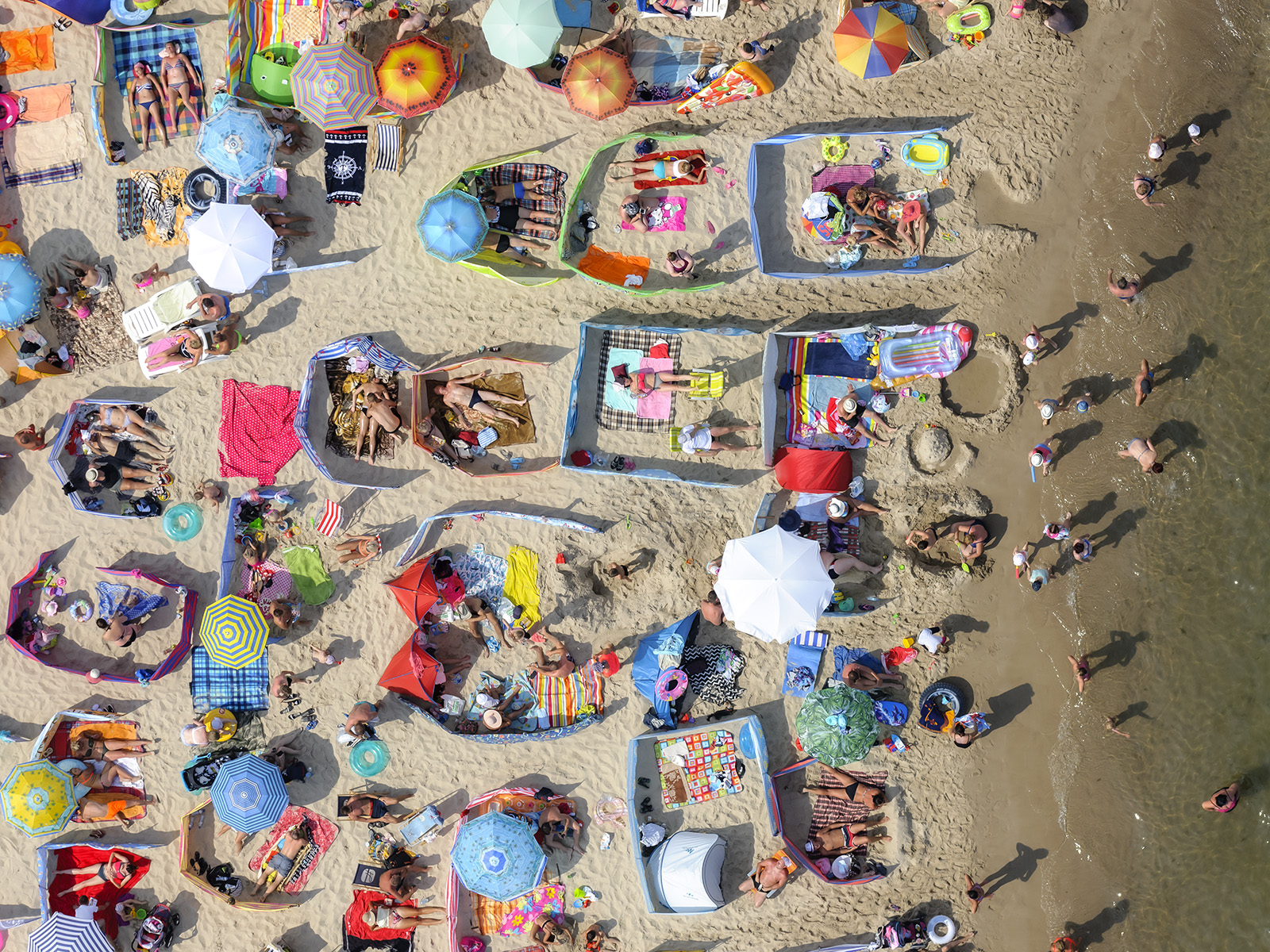
the beach in Władysławowo is one of my favourite locations, it has been so since the beginning of my flying adventure
I HAVE DOCUMENTED THE FLOOD IN SANDOMIERZ
In the spring of 2010, southern Poland was flooded. When I heard that the Vistula river broke through dams in Sandomierz, I packed two engines (one as a back-up), got into my van, in which I can also sleep, and headed south. As I was on my way, Jarek Stachowicz, head of the Forum photo agency called me. It was like he sensed something. He wanted me to go get some pictures from… Sandomierz. I told him I was already on my way. That was the start of our work on the flood project. I’d get up in the morning, take to the sky, and then come back. Almost every time I landed, people would come up to me and ask to look at the pictures. Because they didn’t have any news from their families, because they wanted to see it with their own eyes. I had never felt so useful, and knowing that I could actually help these people propelled me forward. It was easier to capture the scale of the disaster from above. I was also able to reach places that were inaccessible to landbound reporters. I’d fly deep into the flooded areas and discovered a new, dramatically changed world.
After landing and talking to the locals, I’d upload the photos. Then Jarek Stachowicz would call me with his critiques. It has taught me a lot. At first, I was doing news photography. I wanted to show the scale of the catastrophe, but I was also only just learning the area. I was still in the landscape phase. But the more and the closer I looked at the terrain, the more often I pointed the camera down. I tracked the water receding, revealing the destruction. I saw the locals return to their homes.
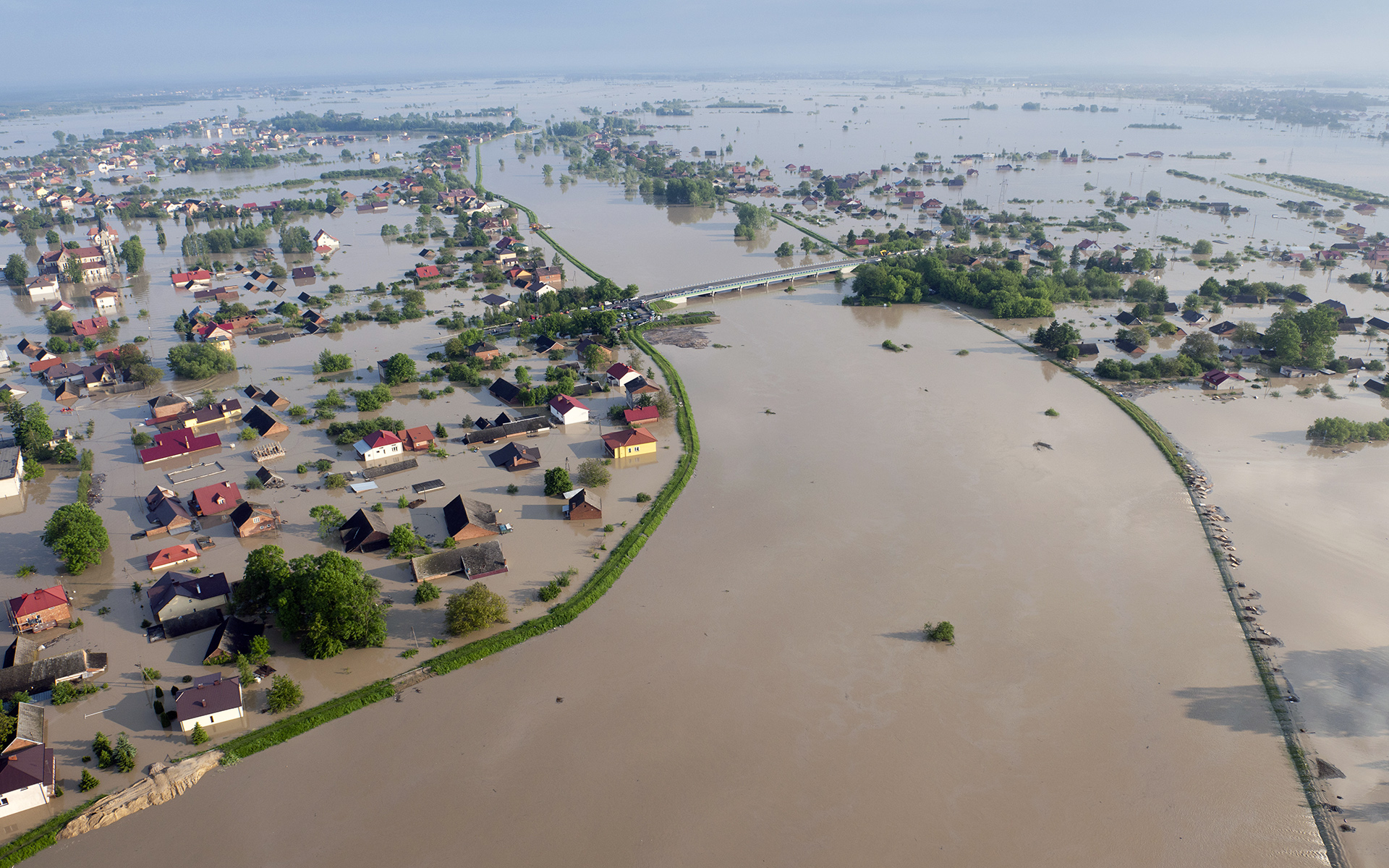
The first sunny day. On the left Trześń, on the right Sandomierz, 20 May 2010.
When the second wave arrived a month later, I found myself flying over Sandomierz again. And with each flight my photos became more symbolic and abstract. The train station, the church, the playground, the gravel pit – they all seemed like places from another galaxy. I remember when rumors appeared that the Vistula was washing away coffins from one of the cemeteries. The thought that the river was taking not just someone’s property, but even their dead relatives, was so striking. I wanted to see for myself. That was when I took the picture of the flooded cemetery, which is very important to me, personally. These photos are impactful. Just like a photo of a flooded playground, they stand a better chance of piercing through the viewer’s defenses.

Sandomierz 2010, Poland
Together with the Forum agency, we organized an open air exhibition in the Sandomierz old town square in August 2010. “Flood From the Sky – Sandomierz 2010”. We wanted to draw in tourists (after all, the historic part of town escaped unscathed), and to direct the media’s attention to the plight of the affected population, while also showing the locals the scale of the disaster. I was anxious about it, I didn’t know if I would be able to handle people’s unfiltered emotions. Tourists would come during the day, followed by locals in the evenings, who would also tell their stories. That’s when I heard that my photos are more gallery than newspaper material, because they’re too artistic. I didn’t understand what they were saying. Why impose these distinctions? The same photo can work in both contexts, it’s the image and the emotion that counts. A photo is supposed to get through to the viewer’s imagination and make them think.

"Cosmos" - flooded gravel pit. Surroundings of Sandomierz 2010
THE TURNING POINT
Right after Sandomierz, I went to Borsk to attend a paragliding competition - one without engines. I made a mistake right after take-off and dropped to the ground from a dozen meters, falling on my back and breaking my spine. Luckily, I was surrounded by other pilots, and was transported very quickly to a hospital in Kościerzyna. The injury turned out not to be serious (with spine injuries, complications are often caused by botched rescue efforts, or underestimating the severity of the injury and allowing bone splinters to move around, damaging the spinal cord).
It was the end of June. I was backed up at work, the peak of the photo season was upon me, and I found myself grounded - wearing a corset, forbidden from lifting weights. I started renting planes, but couldn’t seem to warm up to this type of photography and having to rely on someone else’s spatial imagination. So I went to a gyrocopter piloting course. I had always wanted to do it, but had never found the time. Gyrocopters are a cross between plane and helicopter. Because the rotor is not connected to an engine, like in a helicopter, but is instead propelled by the wind, a gyrocopter is in a constant state of autorotation and is thus an incredibly stable vessel, highly resistant to turbulence. It can fly at 40 km/h, but also at 160 km/h, and is almost as maneuverable as a paraglider, but has a much bigger range. It can even withstand storms.
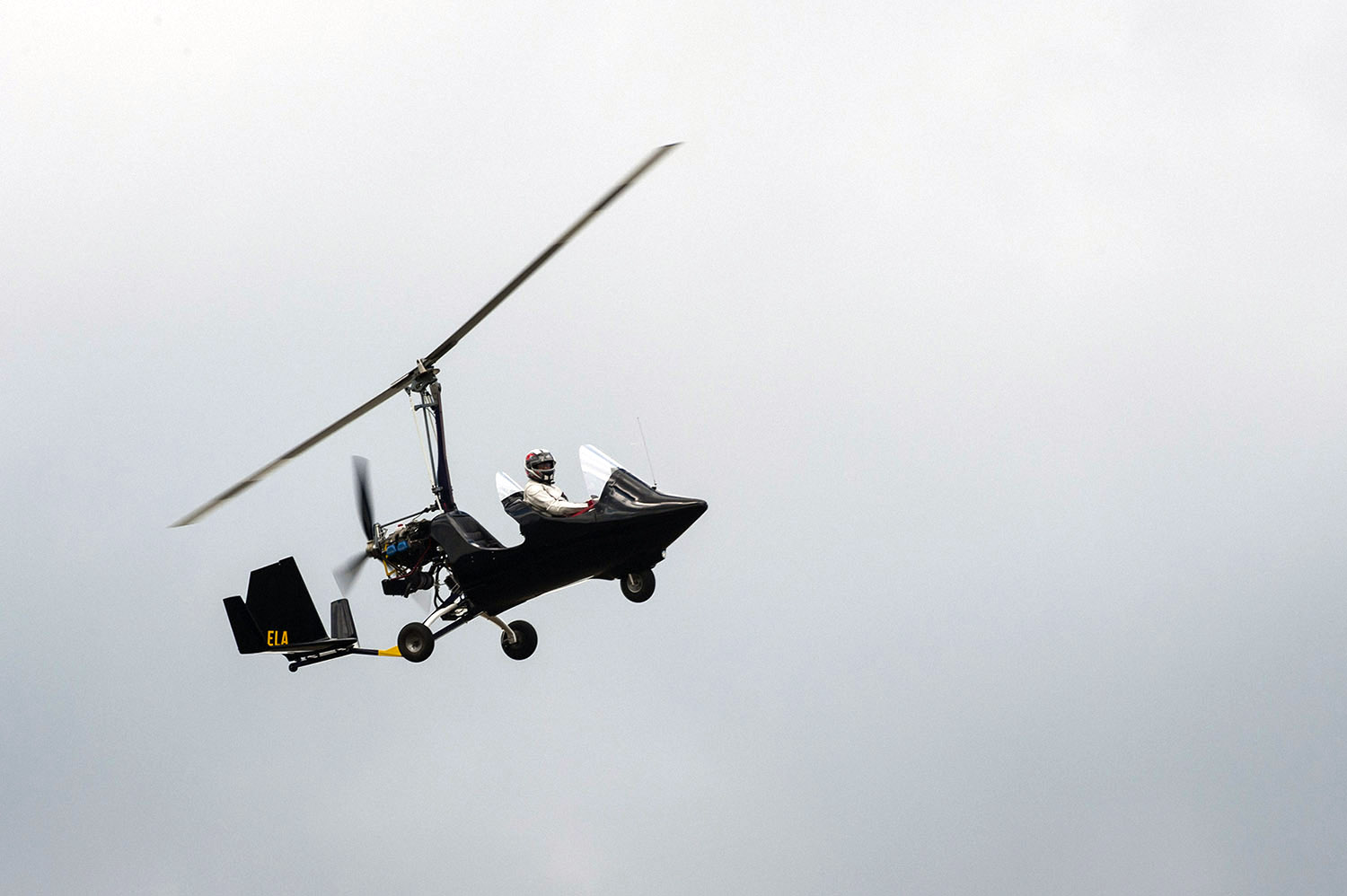
Gyrocopter Couguar 07, made by Spanish company Ela Aviation, Poland, Korne 2010
I took the course, got my certification in autumn, and bought my first gyrocopter together with Kamil. My life changed yet again. Unless it was raining, I was able to get up there and take pictures. Which meant that between April and November, I was flying practically every day. I’d take off near Gdynia, and check off several locations – something it would take me at least three days to shoot using a paraglider. From 2010, I’ve been regularly using both types of craft. Usually I take the paraglider with me to more remote locations, and use the gyrocopter for anything within a 150 km radius from my base. In winter, when there isn’t much snow, I prefer the gyrocopter, but when it gets too snowy I have to use the paraglider – otherwise I’d have to clear the entire runway first.
I was still struggling to wrap my head around the distinctions between documentary photos, press illustrations, photo reporting, promo shots, and what others described as artistic photography. To me they were all just images. They could function in all sorts of contexts. Why the separations? Maybe the deciding factor was who was presenting the photograph?
The next year, I applied to the Panos Pictures agency. It’s a good British documentary photo agency that focuses on social issues. They don’t have many photographers on their roster, and my photos were a bit left of center, but aesthetics-wise we were a good fit. They accepted me, but told me: “Kacper, just don’t think that this will land you spectacular commissions, or that someone is now going to send you to Africa for a couple of months. Those days are gone. We also don’t think anyone will hire us for a bird’s eye view job in Poland. But we’ll definitely be able to offer your photos to the press, because they feel universal and somewhat timeless. You have the ability to use a local issue to say something about human civilization in general.” And that’s exactly what happened. Before, when I would send my pictures to “National Geographic”, I’d hear that they are beautiful and that they’ll definitely reach out to me if they ever wanted to use them. But when a renowned agency started sending out those same pictures, suddenly they were being published. So I guess the equation is: Cool photos + good agency = result.
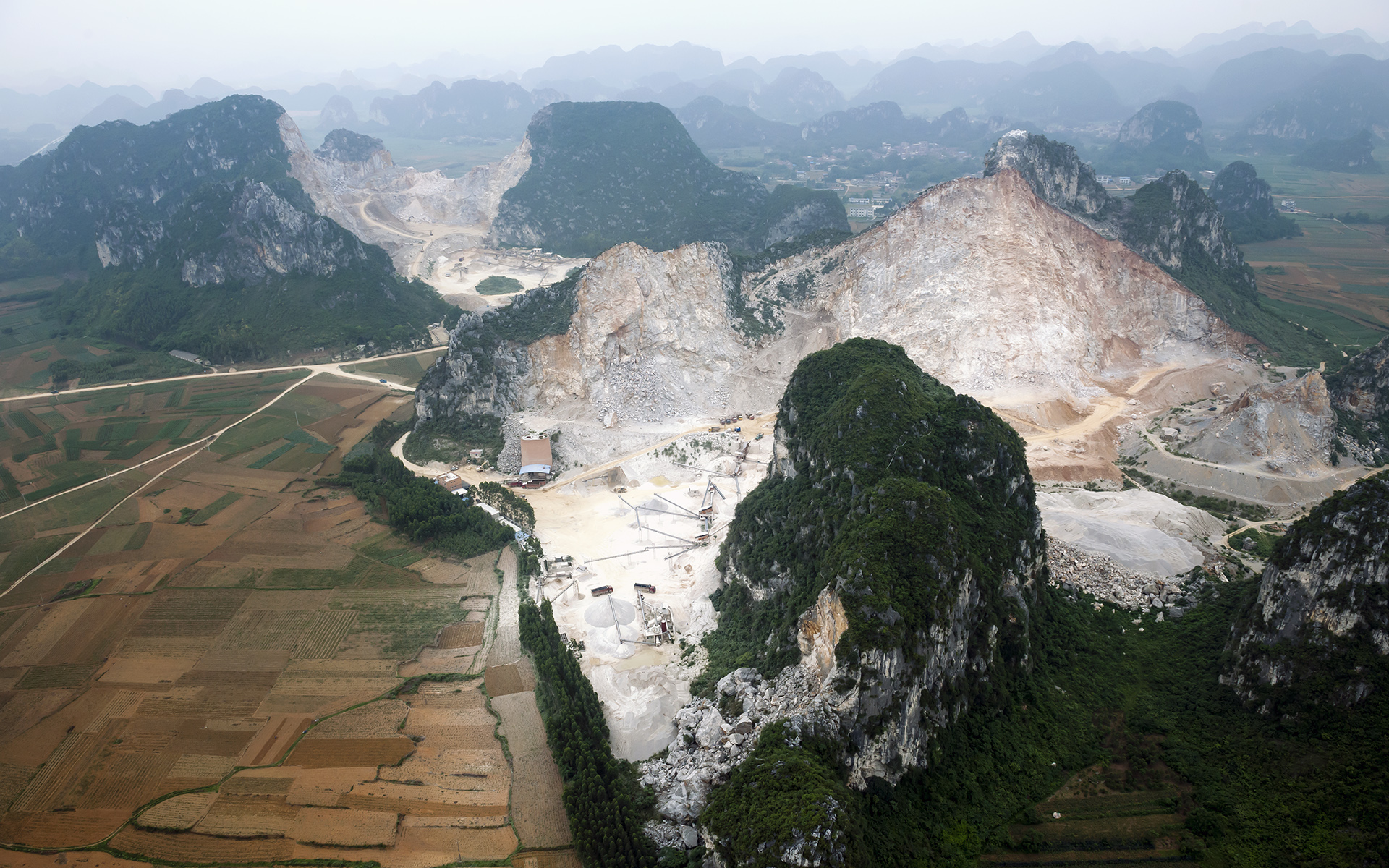
surroundings of Nanning 南宁市, province of Kuangsi, China, 2013
WINNING THE LOTTERY
It was a good time in my life. I was supporting myself with my work, I had more commissions than I could fit in the good weather days, and in the meantime, I was also traveling all over the country, developing my own project called “Side Effects”. But I knew that things would change, that eventually drones would arrive on the scene. I anticipated the competition getting tougher.
I was interested in the world of art – and that’s where I was headed next. The thing was, I didn’t really get modern art. Maybe that was because I personally felt like I was following a different set of rules. I was more of a 19th century documentarian venturing beyond the limits of known civilization. My world was 150 meters above the ground, and I entered it by taking off from my backyard. It was still undiscovered, unfamiliar. The photos were revealing something new, and our group of informal explorers was bound by an unwritten honor code. My personal world, my emotional bubble was very important to me. I only saw myself within the Polish context, in reference to the achievements of other paragliders. We knew each other’s styles and work, as well as favorite topics, and so we stayed out of each other’s way. There were maybe ten of us in Poland. There was no need to muscle in on anyone else’s territory, as there was plenty to go around. My thing was photographing straight down, in obsessive detail. My favorite place to photograph was the beach in Władysławowo in winter and in summer. Winter is so wonderful, it makes everything look like an architectural drawing.
I was still submitting my work for competitions. Around the winter holidays, I would go through everything I’d shot that year, prepare my submission packages and send them out. Each year brought new competitions, but I stuck to the documentary ones. I sent the photo cycle from the Sandomierz flood to the 2011 Leica Oskar Barnack Award. Me and Tomek Wiech made it to the finale, and Rafał Łochowski invited us to take part in an exhibition of Polish finalists at the Leica Gallery Warsaw. To call it a gallery was a bit of an overstatement at the time – the photographs were set up on easels outside the Leica store in Warsaw’s Blue City shopping center. Thus began my partnership with Rafał Łochowski who liked my pictures and offered to represent me.
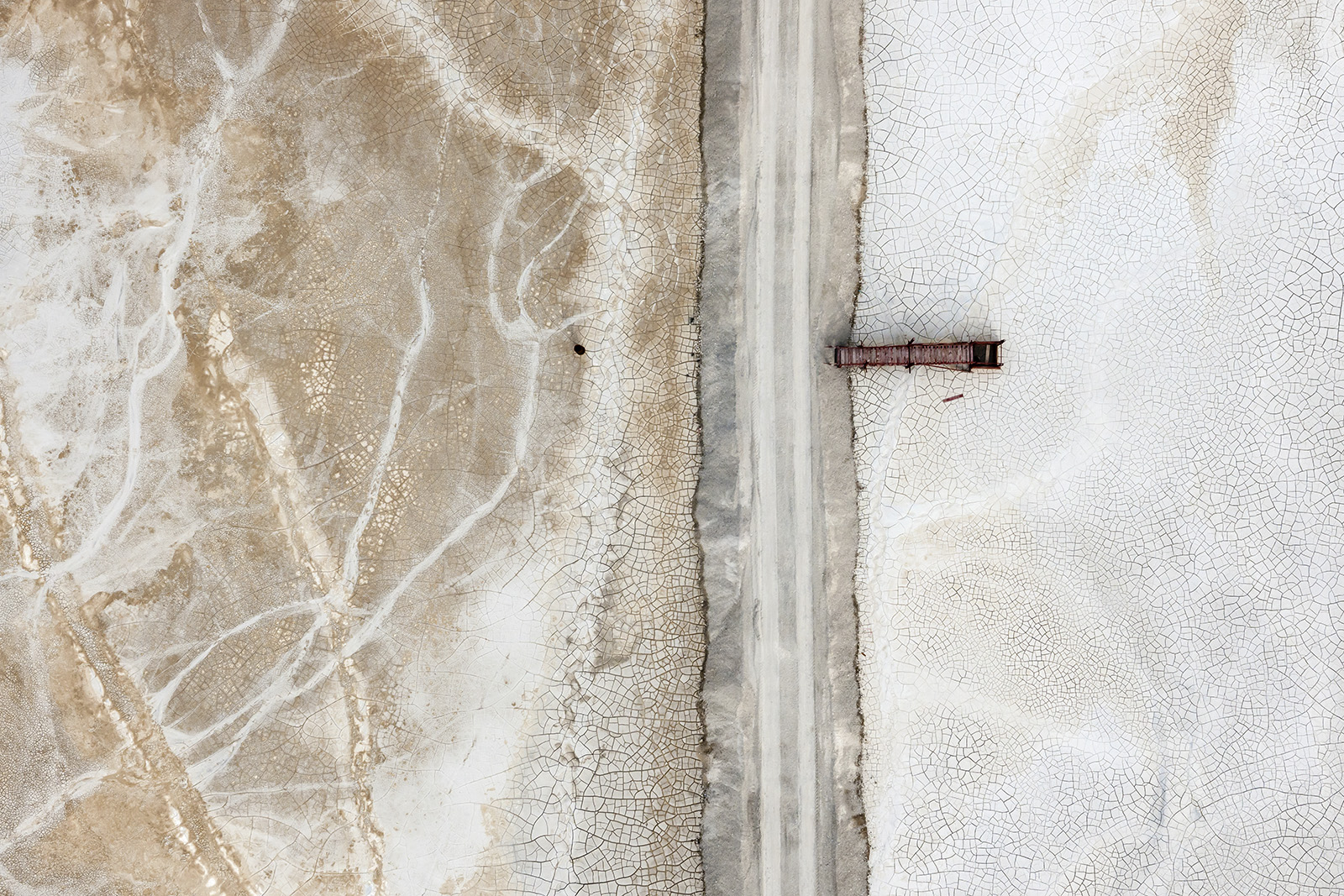
from Side Effects project, Toxic Beauty series, Poland 2013
It was like winning the lottery. I’d get invited to work with people from the photography world as well as various curators – that’s how we ended up organizing exhibitions with Agnieszka Jacobson-Cielecka who included my photos in the Materia Prima cycle of exhibitions, and who arranged the first showing of “Side Effects” (Nebenwirkungen) at an exhibition at the Polish Institute in Düsseldorf in 2012. Back then, photographs were printed on plastic sheets. They were easy to transport, durable, and the image quality was very good. I didn’t pay much attention to the nuances and intricacies of refined photographic materials. All I cared for was the impact of the image, or the composition of images – whether they made the viewer think or feel something, and whether they were an extension of my own experience and my flight. I was overjoyed that the blow-ups allowed people to enter my world, but I didn’t have anything to say anything about the images themselves. I preferred listening to others and watching the effect they had on them.
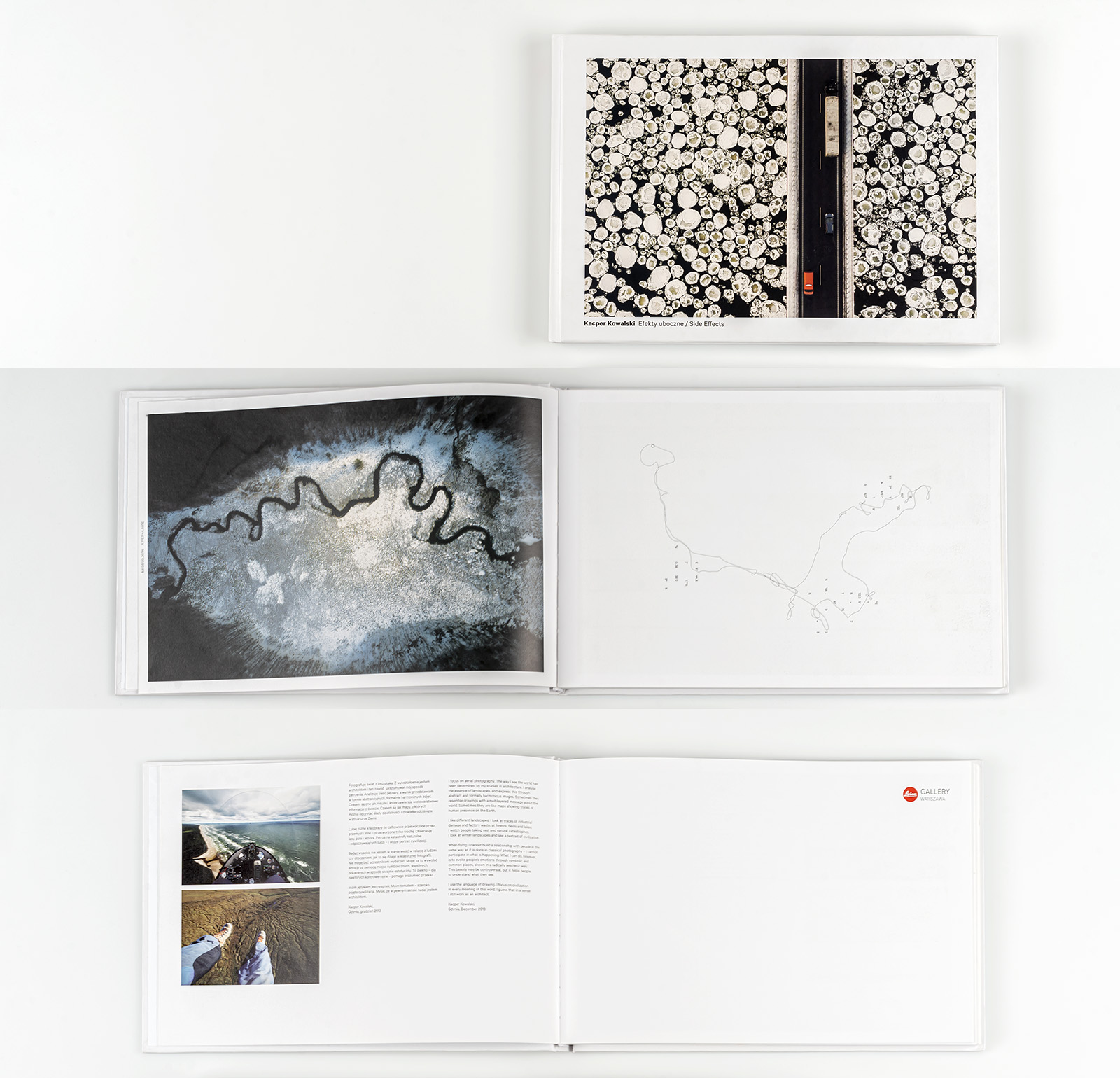
Out of print in 2013 book Side Effects, published by: Leica Gallery Warsaw
Rafał Łochowski tried to talk me into publishing my first photo book. These books are significant milestones. They let people learn more about the photographer. They’re important to collectors, critics, and the audience in general. They serve as a sort of portfolio, but also as a thesis, an encapsulation of your train of thought. Exhibitions go up and then they’re taken down, leaving behind reviews and recollections. Maybe a catalogue if you’re lucky. But a book is there to stay. I was hesitant, because not all my ideas for pictures came to fruition, so I did not feel ready. Rafał put in a lot of effort to convince me to trust the publishing house. Today, I’m very grateful that he did that, because it was high time. And the timing was also good. In 2014, the gallery moved to its current location on Mysia street in Warsaw. It’s a beautiful, fully realized exhibition space. At the opening, we also launched the first Polish exhibition of “Side Effects” and a book under the same title, which we had published in cooperation with the gallery to mark the occasion. The book took on a life of its own. I sent it out to reviewers, and it drummed up even more interest in my photographs. It was also a time when I was paying more attention to the negatives, because I found it annoying if my photos were printed on paper that was too glossy or too rich. I had handed over the production aspect to the gallery. The photo art world is characterized by emotions. It’s a combustible mixture of intuition, fashion, trends, tastes, influence, involvement, speculation, and money. And seeing as in Poland there’s probably not one gallery that can support itself purely from the sale of photographs and without the help of some company or institution (while New York alone has hundreds), we don’t have the necessary know-how. The upside is that we get a lot of fantastic images unburdened by the mercantile aspect, but there are drawbacks as well.
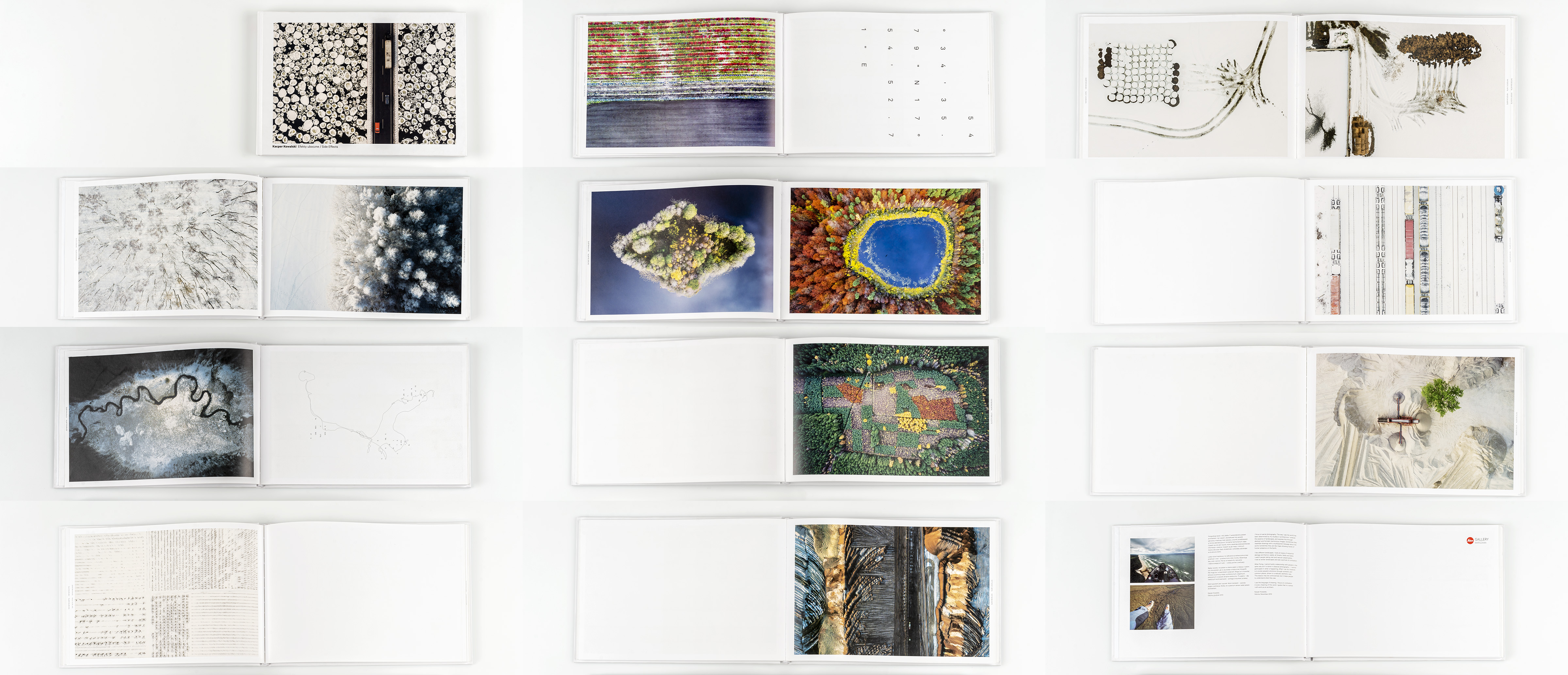
NEW YORK GAVE ME A CHANCE
In the fall of 2014, I went with Adam Pańczuk and Rafał Milach to the Photoville Festival in New York. The Polish section of the program, called “Photopoland”, was co-organized by the Leica Gallery, the artists themselves, and the Łódź Fotofestival helmed by Krzysiek Candrowicz. Photoville took place near the Brooklyn Bridge, in an old harbor-turned-park. The photographs were displayed on or inside freight containers, with 50 of those containers constituting the festival grounds. It was a bit punk rock. My photos were printed out on a banner that covered the sides of two containers arranged into an L-shape – so that was the vibe. In the evening, there were slide shows, a beer garden, live music, and crowds of very diverse people. My dream was to start working with a local gallery – there were so many – but I didn’t know how to reach one. I didn’t have a guide that could set up a meeting, so I decided to just let myself enjoy the festival and take in as much of it as I could.
New York attracted me. I knew the city from my student days, when I spent two seasons working on a construction site there (in 1999 and 2000). Some of my friends at the time worked in NYC restaurants, while others found jobs at local architect studios. We all made the same money. But I figured that if I wanted to be an architect, I had to know the realities of a construction site. I had to know how much a brick weighs, how to make cement in the cement mixer. I dreamed of someday coming back to this beautiful city on my own terms. A dozen years later or so, there I was, parked outside a shipping container for hours on end, guarding my photographs like a night watchman. Every once in a while, someone would come up, curious about the photos, about Poland, about flying. They were important moments for me, because people’s reactions gave me faith that my efforts served some purpose, and also opened my eyes to conclusions I would have never drawn myself. I remember this middle-aged man walking up to me in a sweaty t-shirt, having just finished a jog. We started to talk, and after a while he said: “You know, I work with this gallery… It’s a good space, and the owner might be interested in your photos”. He left me a card. I didn’t think of it much, and the name didn’t ring a bell. New Yorkers like to exaggerate their own agency. Except this guy, with whom I spent over an hour talking in the sun, was Bill Shapiro, the former editor in chief of “Life” magazine. And the gallery he mentioned was run by Ann S. Moore, former CEO of “Time”.
Half a year later, my photographs were hanging on the walls of the Curator Gallery on 23rd street, in the heart of Chelsea in Manhattan. The works were produced and framed in Poland. We used matte, delicate, archival materials. They looked stunning. I didn’t create them on my own. I had already figured a while back that I needed a partner and some support, which is how I started working with Maciej Kuźmicz, former journalist, former chief of communications at ERGO Hestia, and currently the co-owner of a PR agency. I wanted to create my own studio, and I needed a partner to take care of the business side of things, so that I could focus on flying and taking pictures – the parts that couldn’t happen without me. I wanted to give the art world a try on my own terms, charting my own course.
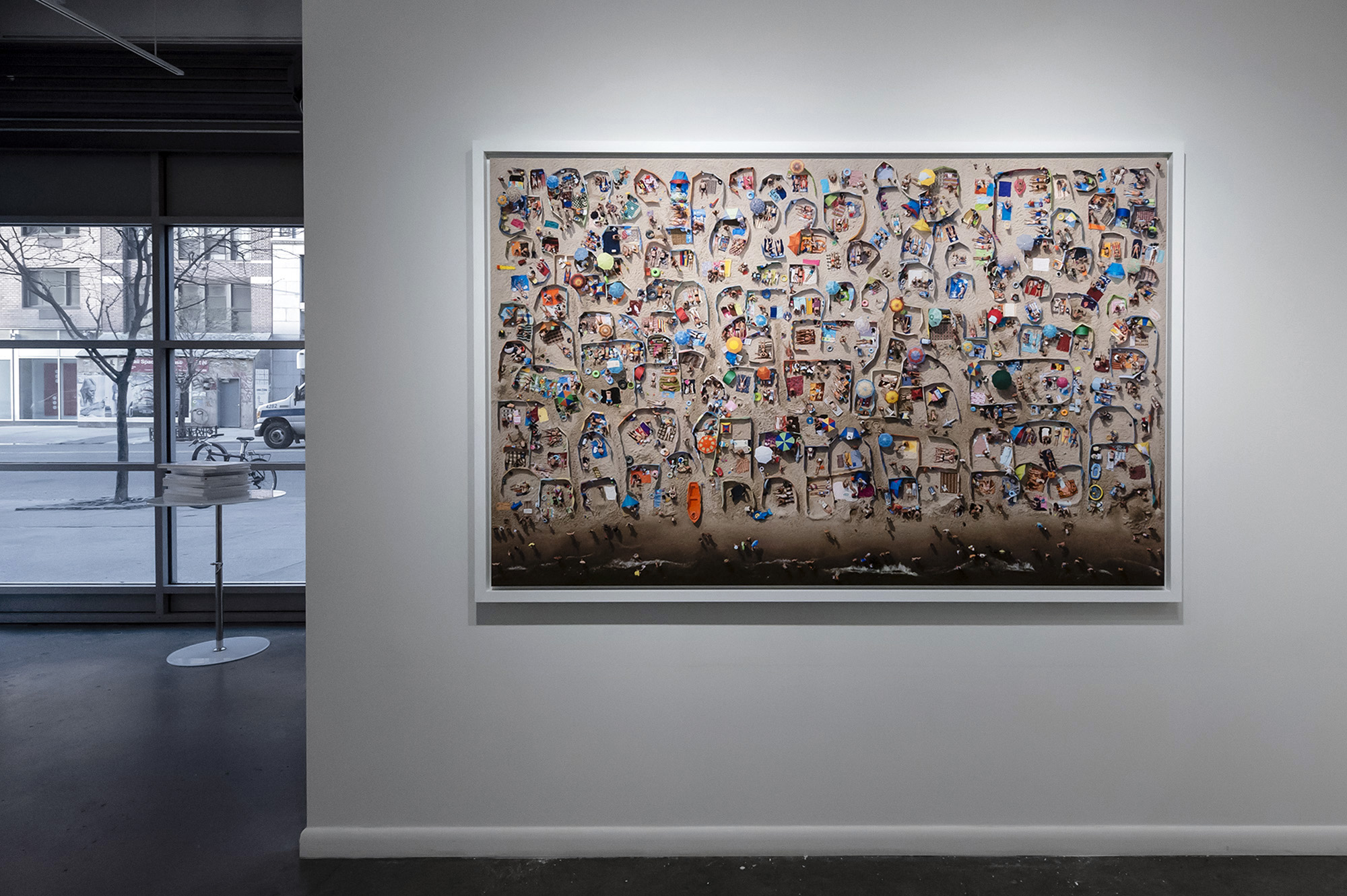
The Curator Gallery, New York, April 2015
2014 and 2015 was when everything changed. “Side Effects” received their third World Press Photo award in the long-term projects category, and each time has been exhibited in over 80 exhibitions worldwide. I remember meeting Edward Burtynsky at the inauguration of World Press Photo in Amsterdam 2014. He was giving a lecture about his project called “Water”.
Ed, born in 1955, is a Canadian photographer who deals with environmental issues. He’s taken pictures all over the world, and has had an amazing career in the worlds of art and collector’s photography. He’s always been using galleries and museums to talk about the world’s problems. Everybody knew him, he was a living legend. I remember that after his lecture was over he spent most of the gala standing alone. Other photographers would start some small talk, but then quickly run out of topics. They couldn’t find a common language. That’s when I realized how different the world of art is from that of documentary and press photography. Not just in terms of the photographers’ interests, but also in terms of the community, the emotions, the customs, the themes. There was absolutely no overlap.
That’s why it’s not easy to reach the right people in the art world – ones that gel with the artist. And it’s rare to find a gallery interested in developing a deeper relationship with a photographer, in supporting them and working to raise their profile. The artist is usually left to make all the decisions on their own. And they have to make a lot of them. How to edit the photographs? How to price them? How to tell your story? Which fairs and festivals should you go to? What shouldn’t you bother with at all?
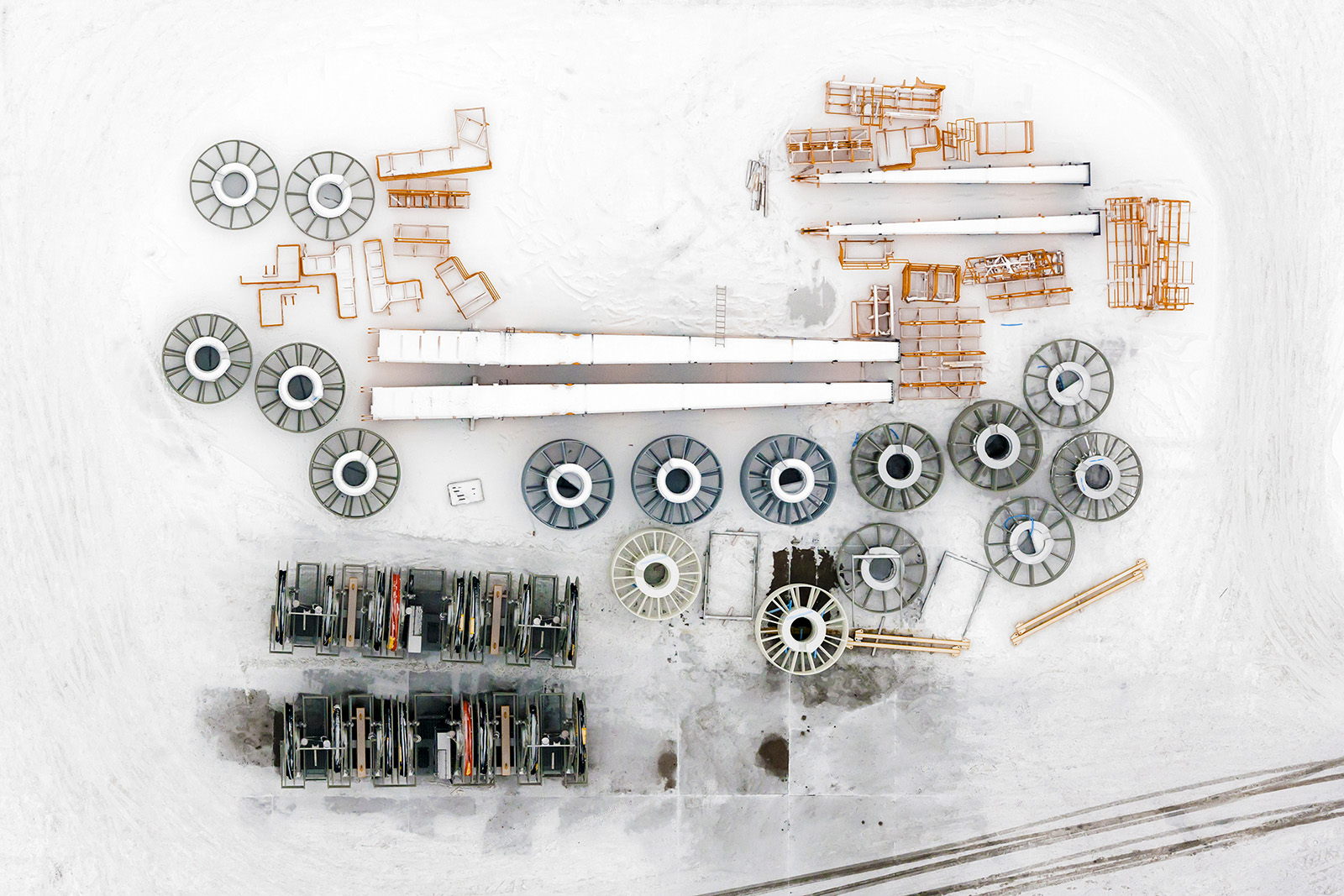
from the project Side Effects, Depth of Winter series, composition 07, Poland 2013
On top of that, the age of manned flights was drawing to an end. Drones had arrived. In 2015 alone, 2.8 million photo-video devices were sold around the world. The scale has changed. My influence with the number of exhibitions no longer mattered. Within a single season, demand for my photographs dried up almost completely. I started being offered rates that barely covered the cost of fuel. First I saw my shots signed with someone else’s name, then it escalated to entire projects, or books. I kind of got it – the drone operator wasn’t in the air himself, he didn’t see that world with his own eyes, he needed to get inspiration somewhere to know what to photograph and how. The honor code went out the window due to the scale of the phenomenon. It’s hard to expect that a kid who got a drone for their First Communion would be aware of the whole context. That was a difficult time for me. At first, I would hear: “You know, Kacper, your pictures are great, but the financial director doesn’t see any difference in the quality. She does, however, see the difference in price.” With time, most marketing teams got their own drones, and drone operators learned how to take better marketing pictures than me.
I bought one, too. Why not? Why risk my life and health when I can just launch a device into the sky, comfortably seated on the ground. I thought the drone would offer me new possibilities. After all, while I’m airborne, I can’t hold still, and stable recording is impossible. Paragliders and gyrocopters are constantly on the move, and their engines generate vibrations. So I started creating cinematic photographs. I’d fly around, looking for the shot, then land, drive to the spot, send out a drone and record the scene as a living photograph. The result wasn’t bad, but I didn’t like it, because the light would keep changing, and the shot was never as I had remembered it. I came to the conclusion that I have to go up in the air myself, fly around the object, look for the best light, find the perfect shot, establish a relationship with my surroundings, smell and taste the air – and only then can I take the photo. I have to be in the air for my eyes to open up. On the ground, I’m like a mole. And I don’t feel the need to photograph anything. I can’t take pictures without flying. It’s as if the flight acts like a catalyst. That was when I decided to stick to what excited me the most. And if the world was going in a different direction – oh well. That wasn’t my race anymore. I was sticking to my guns. I thought it was actually a blessing in disguise, as I was tired of photographing things just for a paycheck. I figured I needed to find a deeper perspective, to slow down, appreciate what I have already accomplished. And to dive deeper into the art world.
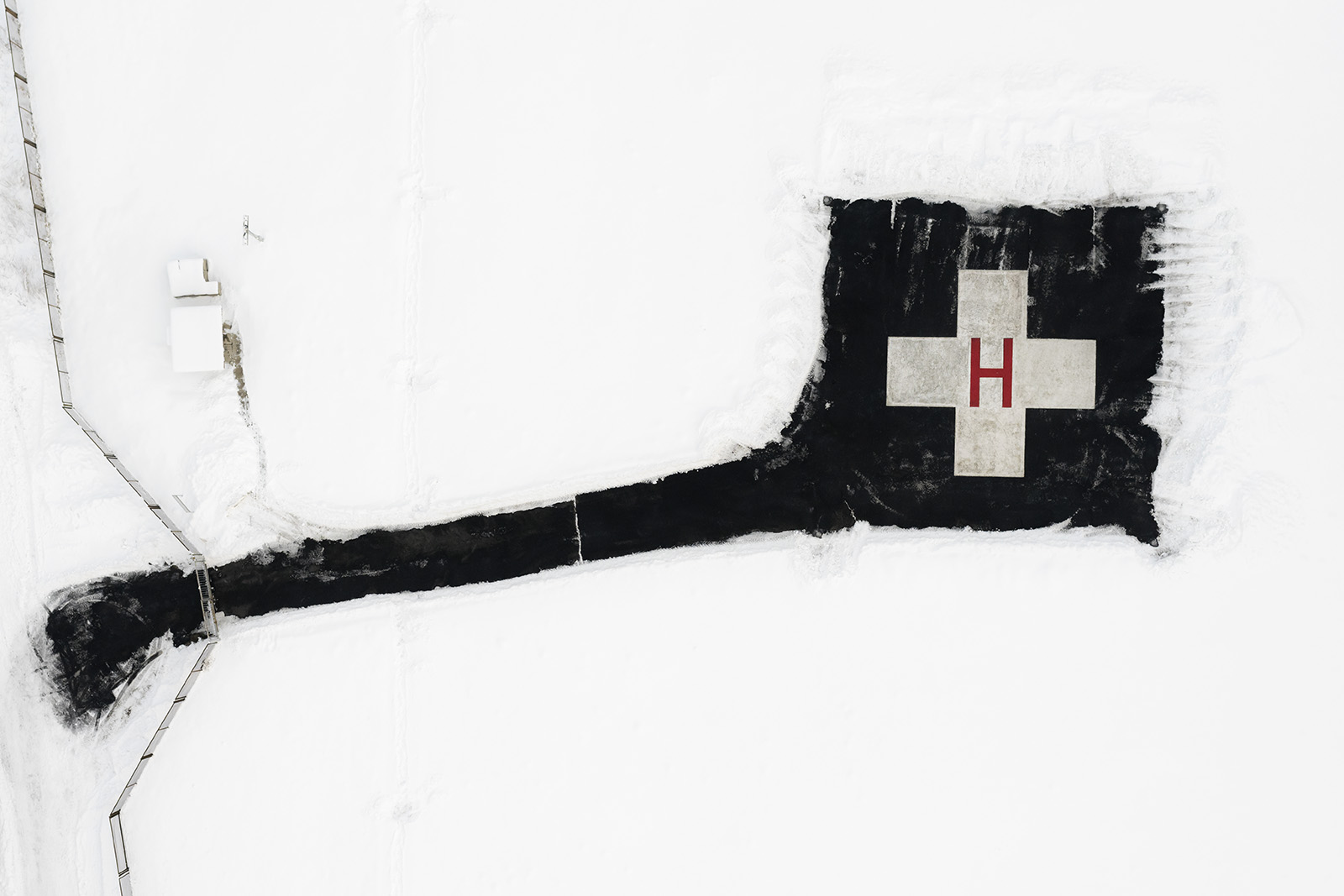
from the project OVER, composition 15, Poland 2016
ENTER CRISIS
“Side Effects” had received every possible accolade, the project was done, but for some reason I couldn’t enjoy that fact. I lost the commercial photography gigs, I didn’t have any idea what to do next. I felt burnt out. I was beginning to realize that my sense of purpose was my own fabrication – the world wasn’t waiting for my photographs, it was doing just fine without them. I was also getting news about one excellent pilot after another getting into accidents. I could feel a crisis approaching. But I still felt drawn to the sky. Then winter of 2016 came, and I subconsciously started working on another project. I wanted to spend some time with myself and try to understand why flying was so important to me, why I felt so alive when I was up there. I started photographing myself, I wanted to lose myself in the mist between earth and sky. I took photos of an abandoned, virginal, dead world right after snowfall – it was like discovering a new, alien planet. Or as if Earth had shown me a completely new side of herself. I wondered what I would leave behind if this were to be my last flight. What would remain an hour after I crashed, a thousand years later? Emotions came flooding in, and then poured out into the pictures I was taking. Though I was still photographing the Earth, it was like I had found a new, previously overlooked space that had eluded myself and all my colleagues and competitors all those years. I’d fly in crappy weather, to places where no one else was flying or even sending out drones, because there was nothing there.
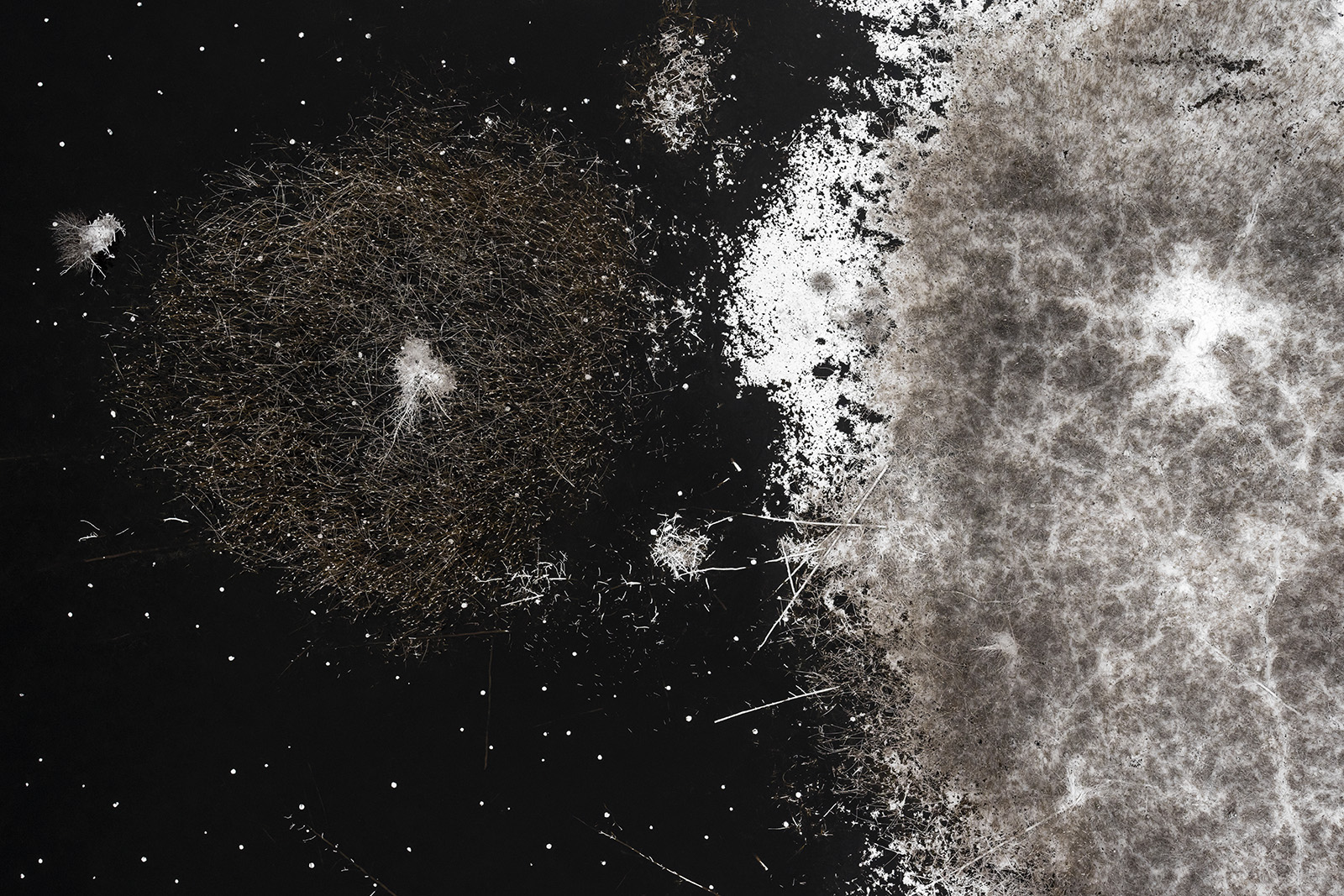
from OVER, Poland 2016
In spring, when those feelings subsided, I looked at the photos and got a bit scared. They were picturesque portraits of the planet, but there was also an emptiness to them laced with terror. A vision of a world after an apocalypse, except there was no apocalypse. That was another important turning point. I didn’t know what the project was about. I knew I didn’t want to take it to the press – I couldn’t have a photo that - to me - clearly illustrated fear being used as a companion piece to someone else’s issue. I started going to portfolio reviews, meeting people, showing my photos. I had never done it before, because I had wanted to be invisible. The image was king. Up to that point, I had strived for machine-like precision, I was a human drone. Take off, shoot, land. No emotions. Pure professionalism.
In the fall of 2016, I found myself at a portfolio review in Landskrona in Sweden, and was granted a solo showcase the following year. I met many wonderful people while working on the OVER project,. They opened my eyes to important issues. I remember Piotr Bazylko being benevolently amused by my gripes with the newspaper world and minding how the press handled my photos, changing the composition, the saturation, the colors – until I was on the verge of packing up my things and putting the whole OVER project away in a vault. Piotr told me: “Kacper, when you’re gone, you won’t have any say in what people do with your photos. And they’re going to do whatever they want – you have zero control over that. What you can do is learn how to enjoy the impact you have on the world. Just relax and have a laugh about what they’re doing with your work”. It was a very valuable lesson - separating my emotions from my work, which is actually mine only until the first public showing. After that, it takes on a life of its own. Meanwhile, Łukasz Gorczyca from the Raster gallery took a look at my photos and went: “Kacper, but does this story have a happy end”?
Good question.
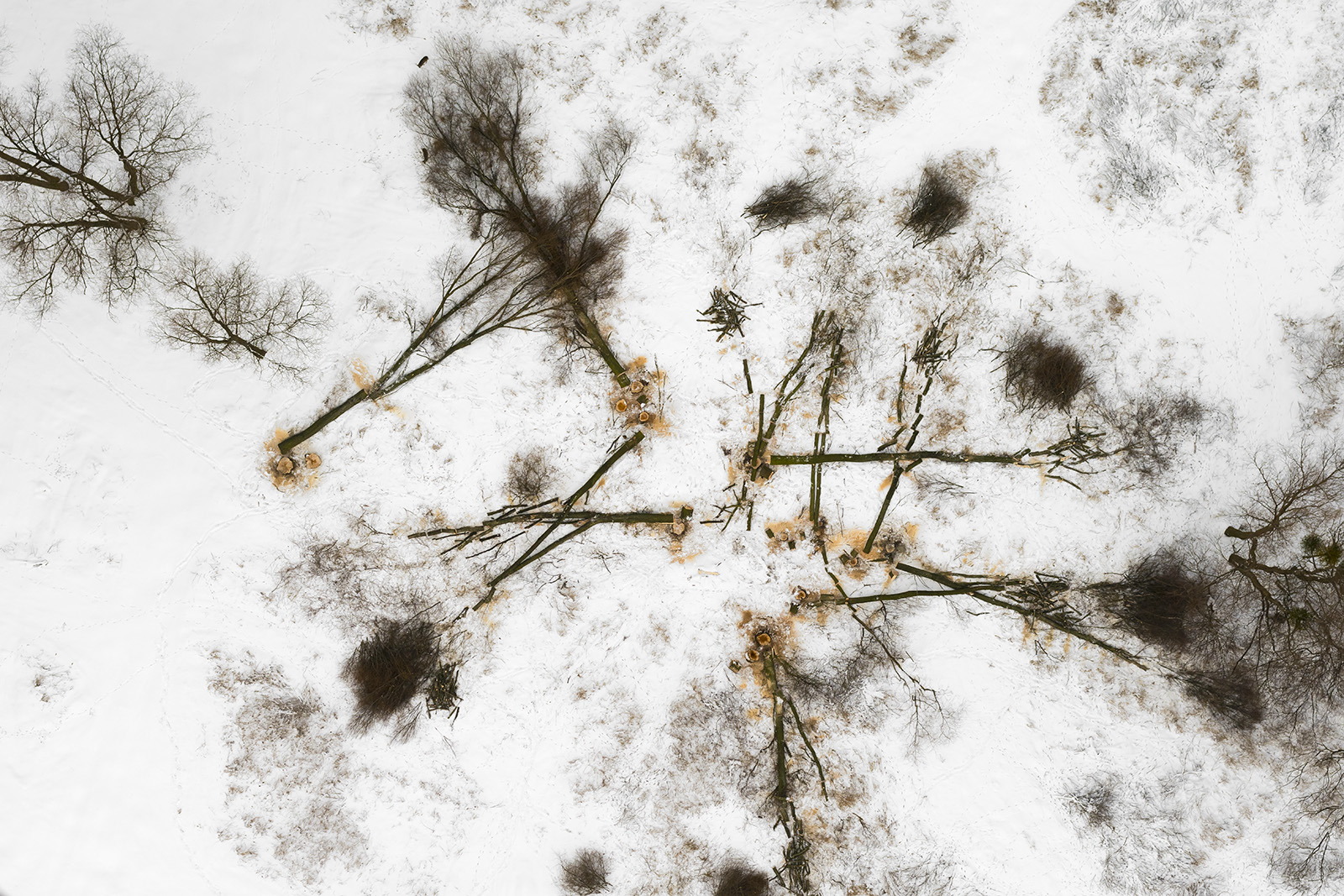
from OVER, composition 11, Poland 2016
This was also when I realized that this project was about me. It was my way of talking to myself, but also to my close ones, about what I was going through. It was therapeutic and cathartic. Like a machine coming to confession. For years I had kept my feelings to myself. I avoided talking about fear, anxiety, euphoria, or mania. For years, I wrestled with those things fearing that if I gave too much air to this dangerous notion, I would open myself up to a whole reevaluation of my flying. I would have to look past it and see my close ones, and then this perfect world of illusion would come crashing down. Except that now it was doing just that on its own. This was when I started understanding a little bit more. I realized that while photography itself is important, what’s even more important is the story and the creative process behind it. Because without that process, the photos are empty vessels.
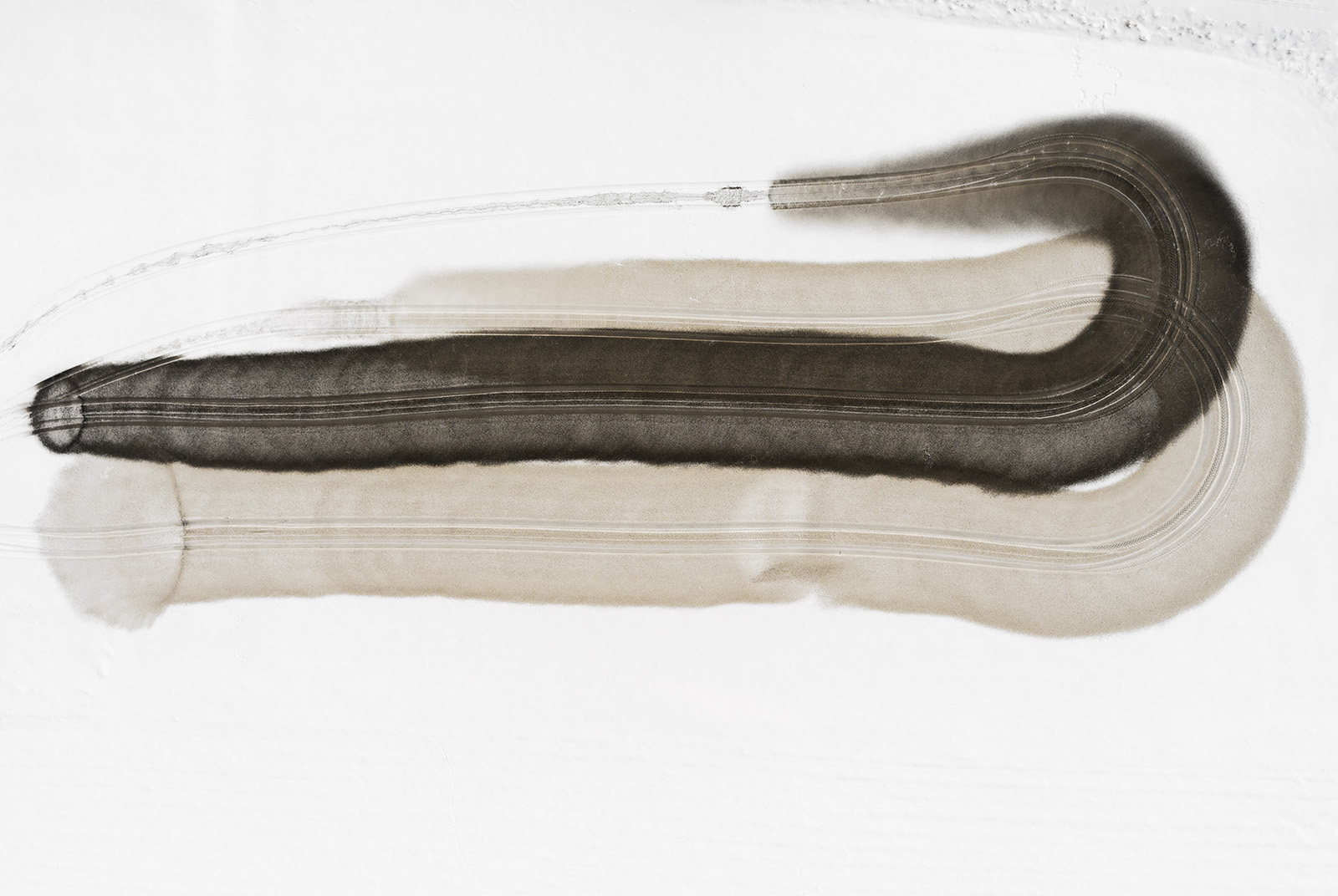
from OVER, composition 18, Poland 2016
DOING MY THING
A year later, in September 2017, I met Wiktoria Michałkiewicz in Landskrona. She’s a curator, writer and researcher working in the world of photography. For the past few years, she has been working with Fotografiska – the biggest private photographic institution in the world, with branches in Stockholm, New York, and Tallinn. Wiktoria is an institution. She runs an agency specializing in visual communication and strategies for developing photographers, called REZO. She has incredible, globe-spanning contacts in the worlds of art and photography. We started working together to promote OVER. When we went to Paris Photo 2017, Wiktoria acted as my guide. We jointly came up with a long-term strategy for my artistic development, set down priorities, developed a plan for the coming months. One of our biggest goals was finding proper representation for me that would strengthen my position on the international photographic market. A few months later, I signed a contract with one of the best photo galleries in London, where I joined such legends as Gered Mankowitz, Lucien Clergue, Nick Brandt, and Patrick Demarchelier. In November 2018, my photos were shown by Atlas Gallery at Paris Photo. In 2020, I started working with Wiktoria again on a new project, which she is curating.
The result of this project is going to be a book titled “Arché”, on which I am working with Ania Nałęcka-Milach, and a foreword for which was supplied by the Icelandic writer Andri Snær Magnason . Another change is coming regarding the galleries that represent my work, marking my next step in the art world.
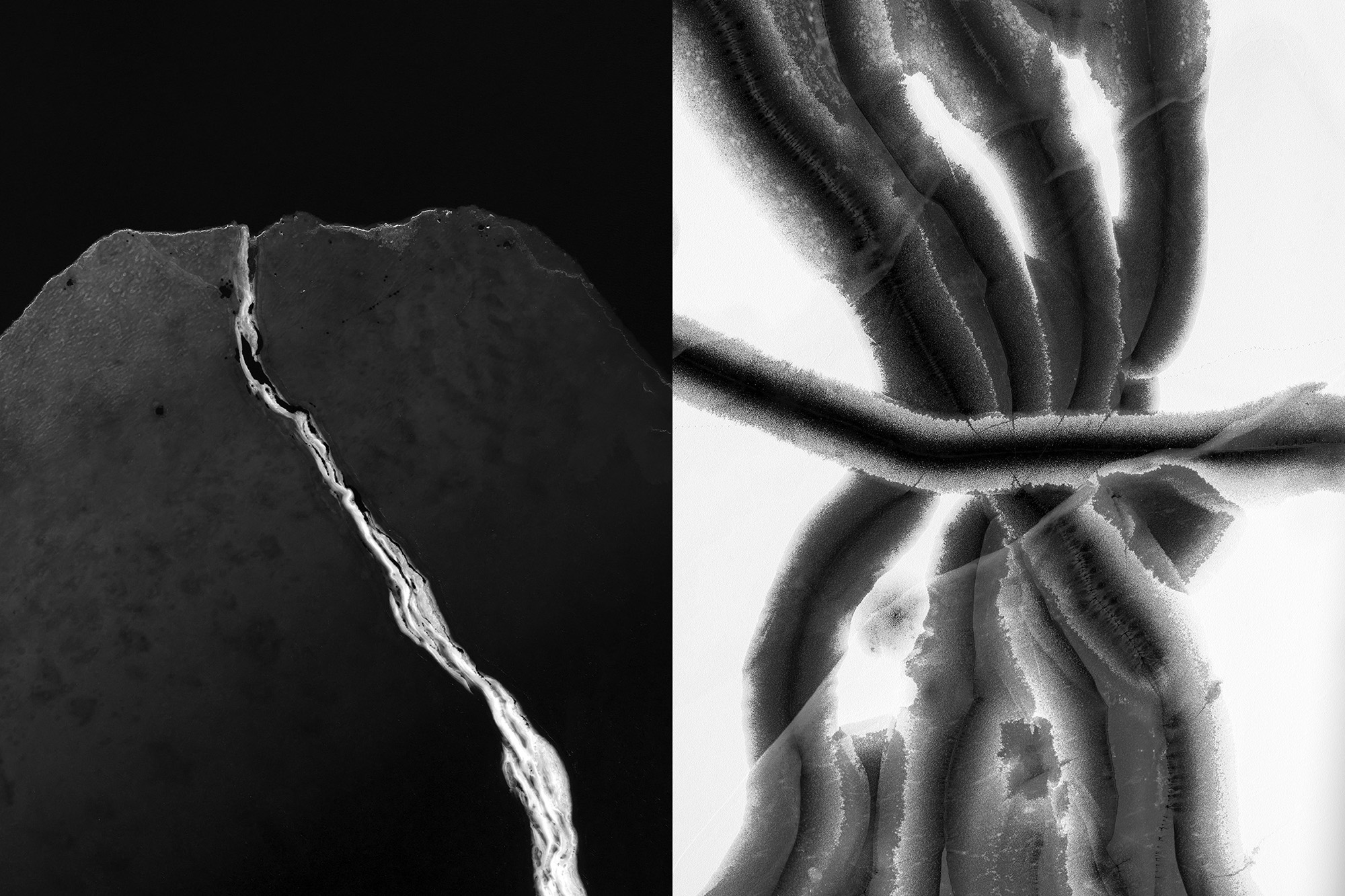
from Arché, Poland 2017-2021, composition 24 and 11
And I’m doing my thing: flying, taking photos, and still enjoying it. I try to be open to working with wonderful people whom I trust, and I’m happy that they too can work the way they like. This yields the best results, even if a bit unexpected at times. In the words of Lao Tze: “When you do not-doing, nothing’s out of order”. In other words, if I’m doing something because I love doing it and am open to the world, everything else will fall in place.
The photography market is constantly changing and elusive, much like art itself. There’s no manual. Władysław Strzemiński claims that once you can create something, know it, and feel that there’s no creative effort in bringing it to life… you should drop it and move on, find the next stage.
One thing is for sure – I’m still drawn to the sky. And I still don’t know why. I would like to fill myself up with this sensation for all those who can’t fly or never had the opportunity. Nowadays, people are replaced by drones. No one really goes up to take pictures personally. Next, drone operators are going to be replaced by artificial intelligence working for giant corporations. I think manned aviation is going to become a thing of the past within our lifetime.
So why do I still fly and take pictures? Maybe there’s no point. And maybe I’m just doing it because I’m trying to capture something intangible hidden just beyond the horizon.
Kacper Kowalski for “Press”, summer 2021
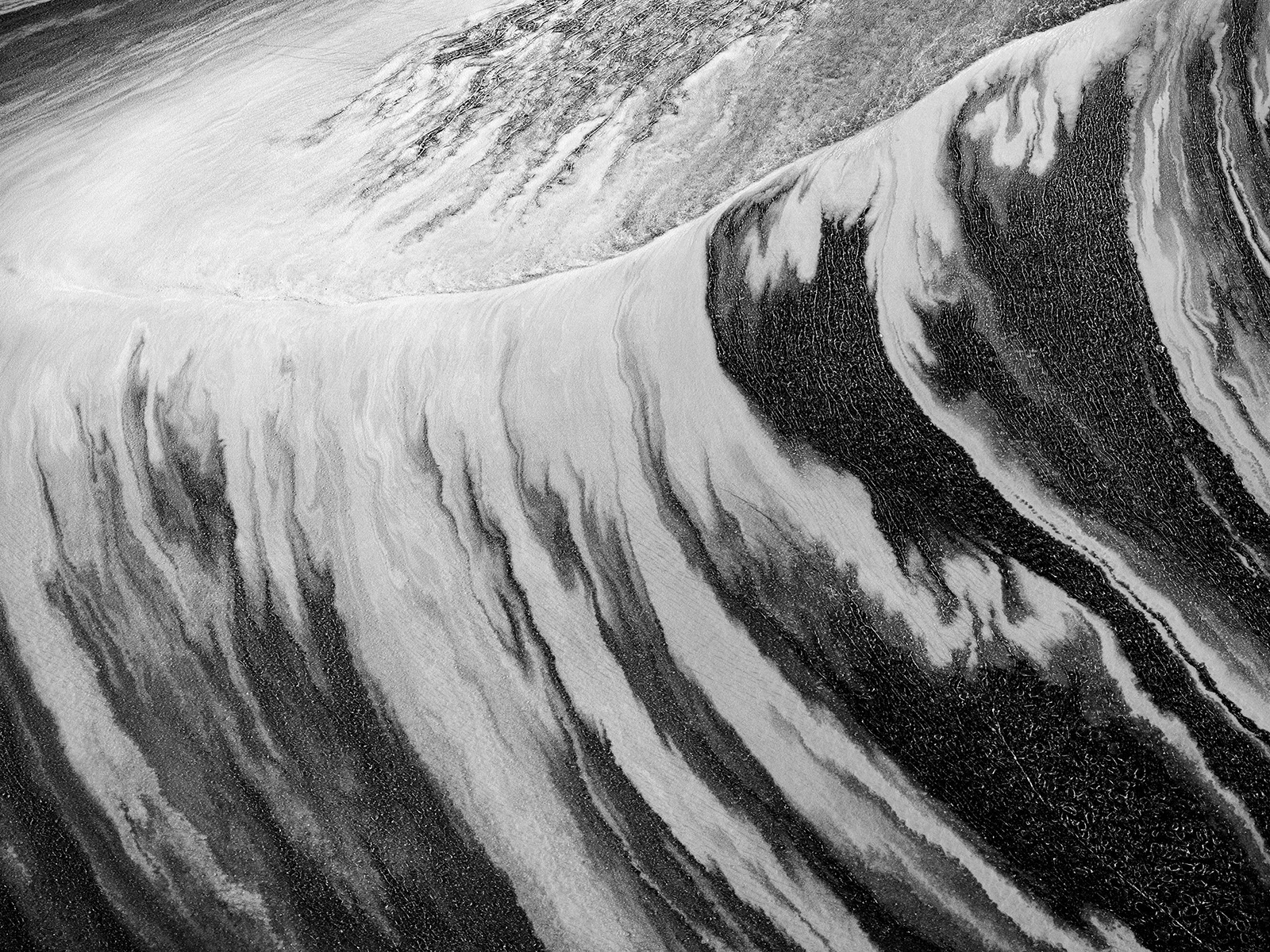
from the incoming Event Horizon project, Poland 2021. The book is planned to premiere in 2022
P.S.
This summer marked 25 years from the first time I took to the sky. Those 25 years translate into 5 thousand hours spent in the air. I estimate that I covered 250 thousand kilometers by air. It’s the equivalent of going around the planet along the equator six times, or launching myself into space and going almost all the way to the Moon. I’ve gone through at least 17 paragliders: eight for thermal flying, eight with engines, and one tandem. I wore out six of my own paraglider engines, and two that belonged to someone else (in China), as well as three gyrocopters. I estimate that my flights required 30 thousand liters of fuel (a paraglider engine burns 4 l of regular gasoline, while a gyrocopter burns 15 l). for the past 15 years, I have been supporting myself with the photos I take in flight. My photos received three World Press Photo awards and dozens of other prizes. They were shown hundreds of times at group and individual exhibitions around the world. I am represented by a couple of galleries, and three photo agencies sell my pictures to the press. I can’t count the number of cameras and lenses I’ve gone through while flying. There have been dozens. I have also had some exotic adventures: three times I took to the sky over the Dalai Lama’s house, I had a dozen or so emergency landings in trees, marshes and on rooftops. Once I had to run away from a herd of calves near Salamanca in Spain, another time an elderly cow herder thought I came to take him to heaven. It’s been an experience.
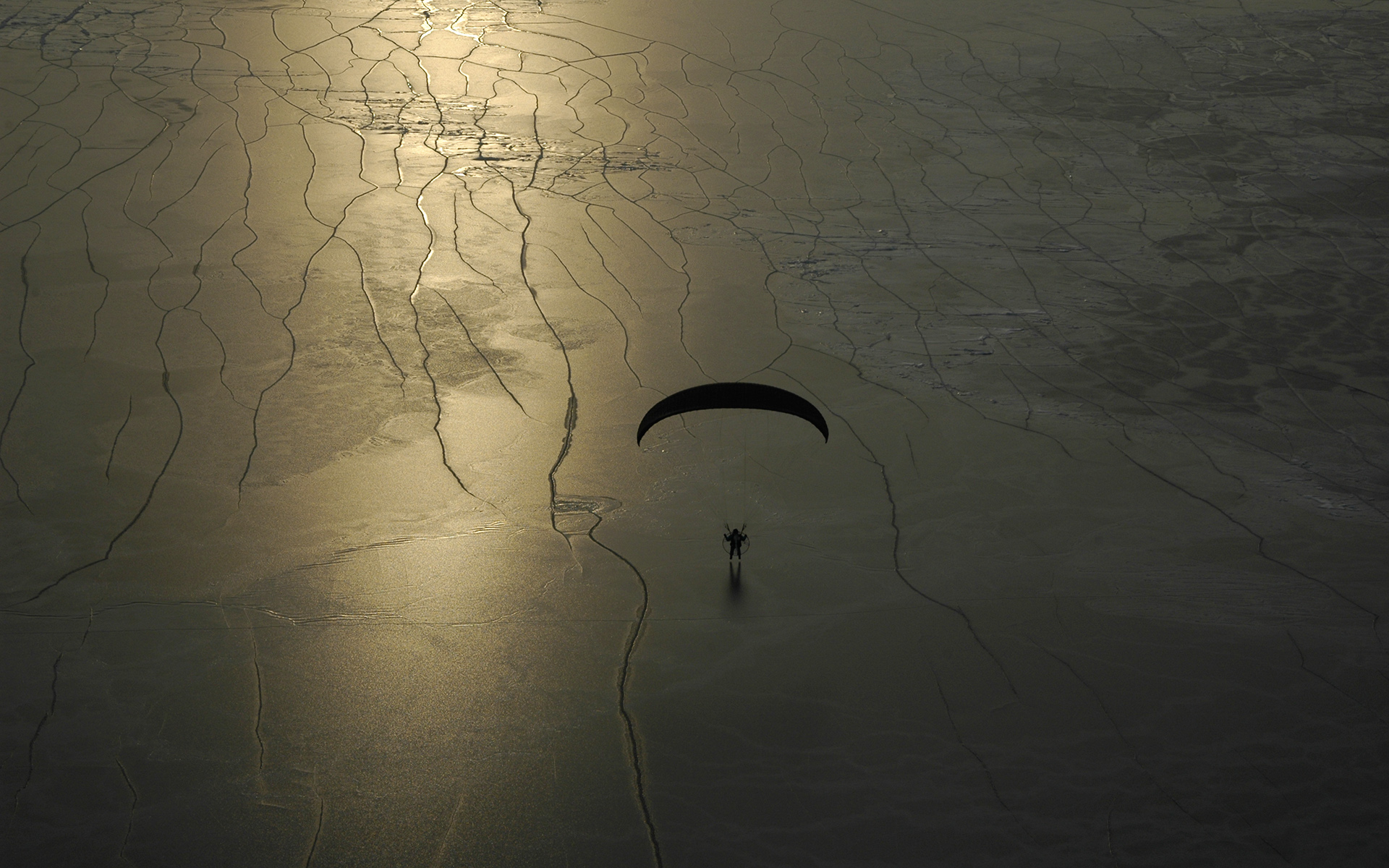
Paragliding Searching Group training, 2005 year, frozen Puck Bay